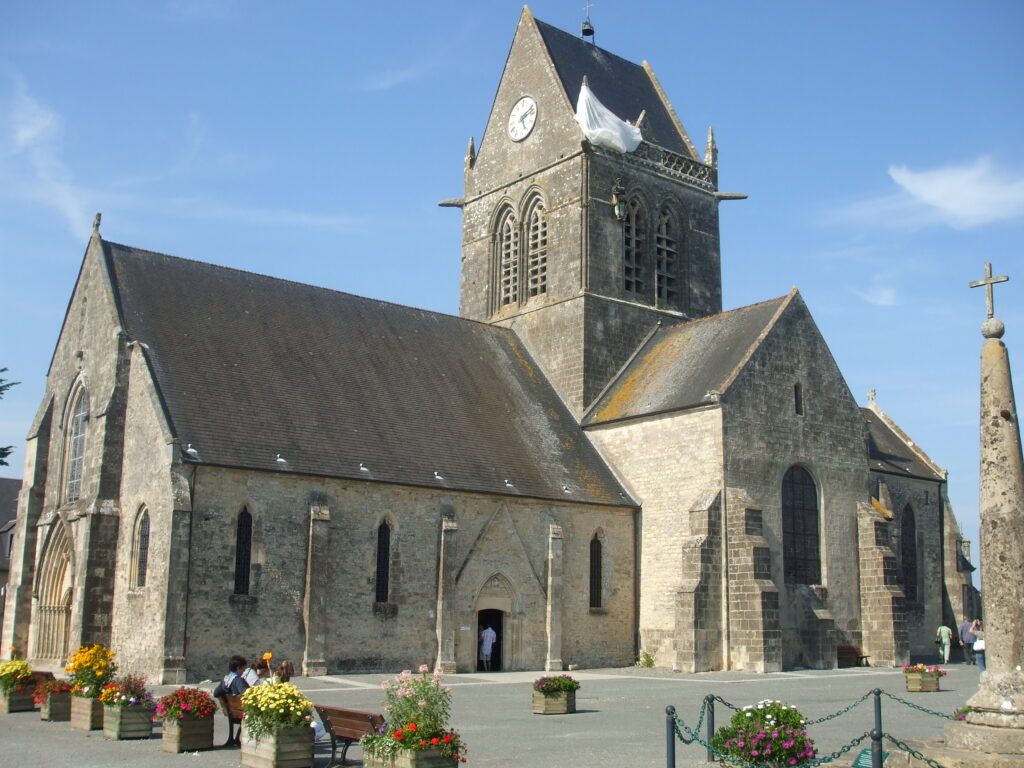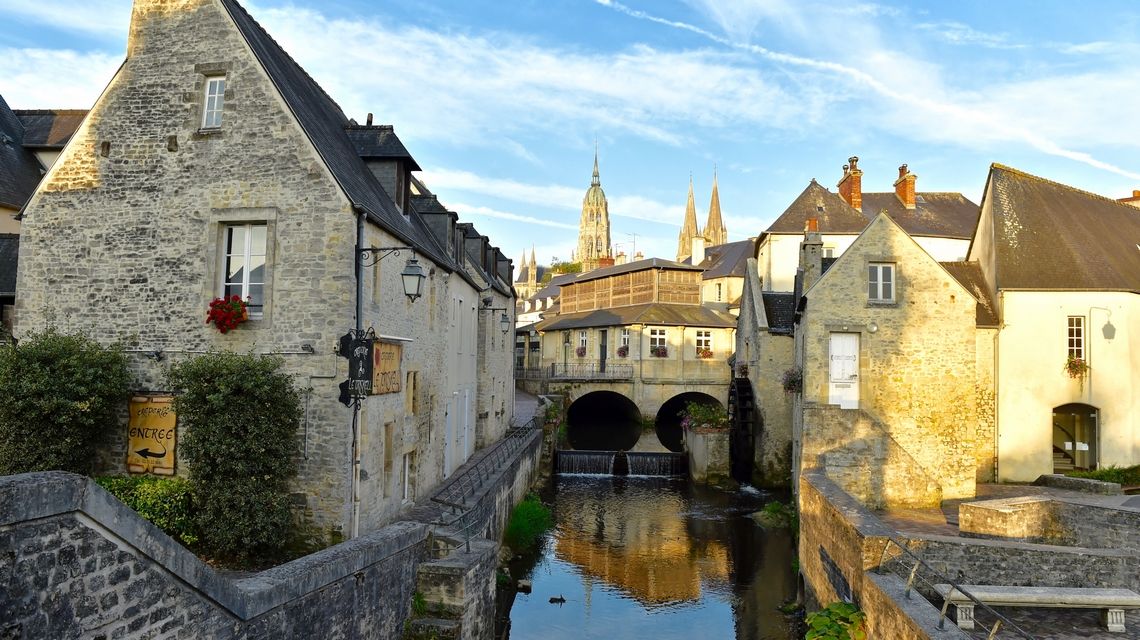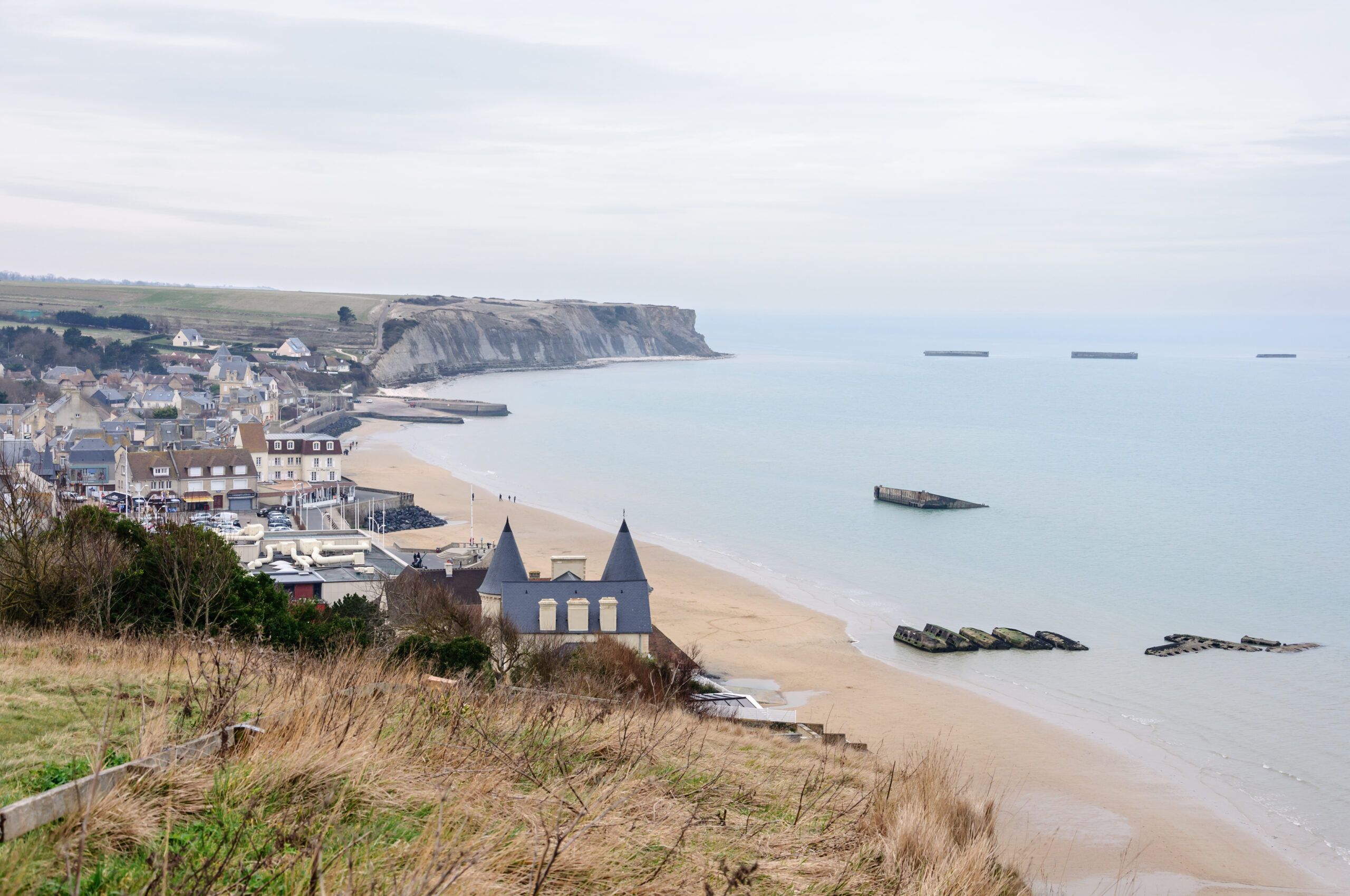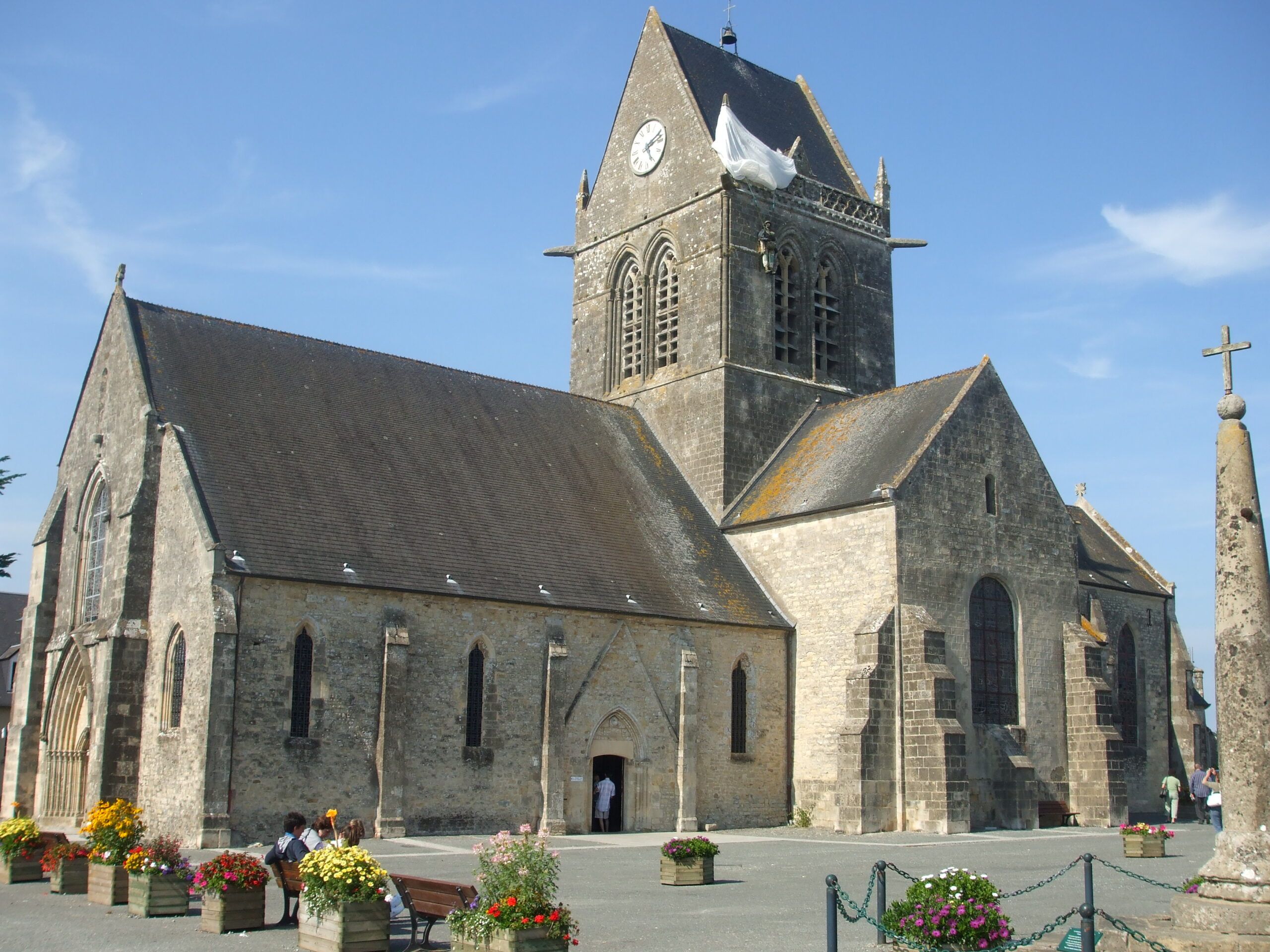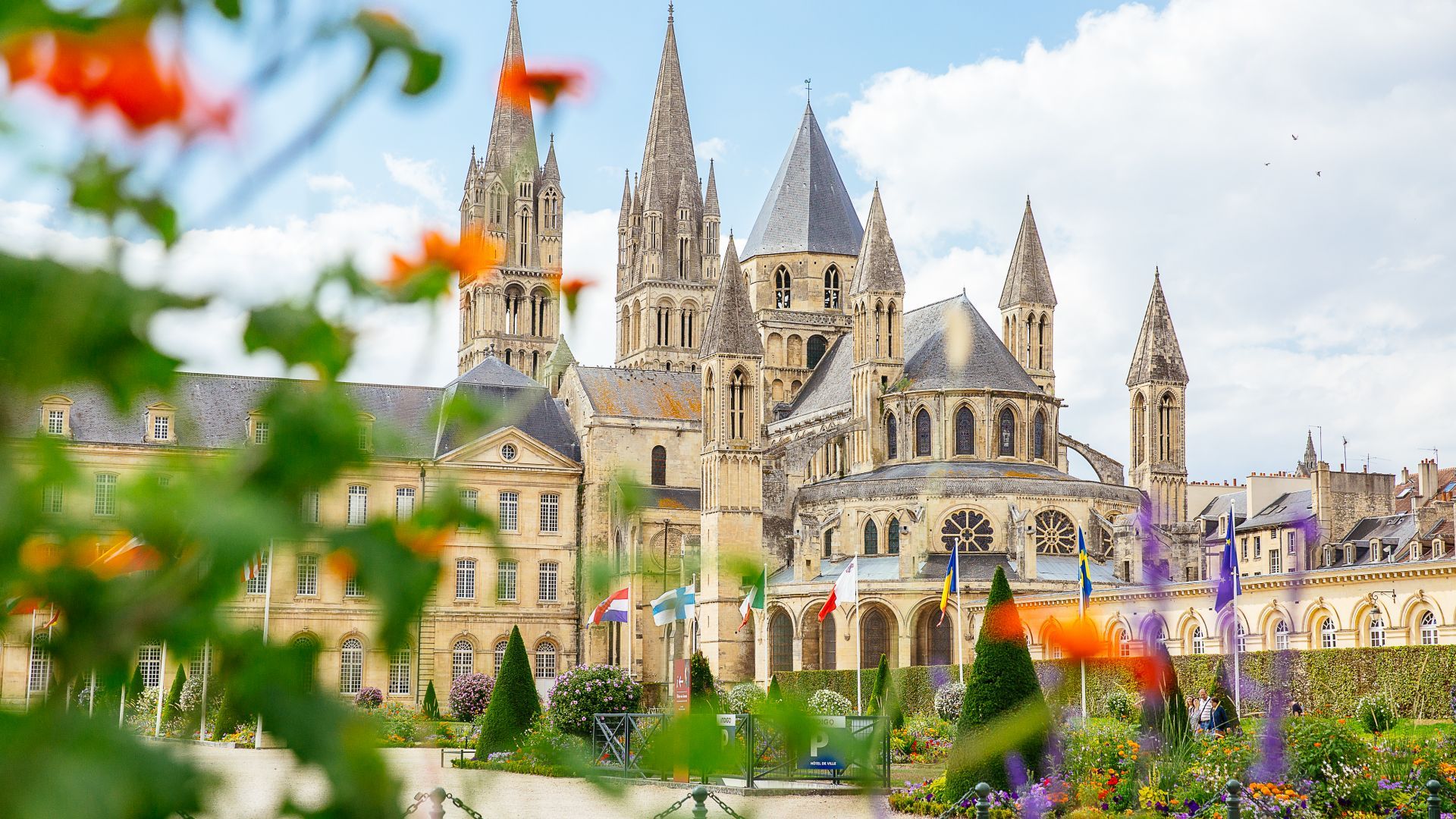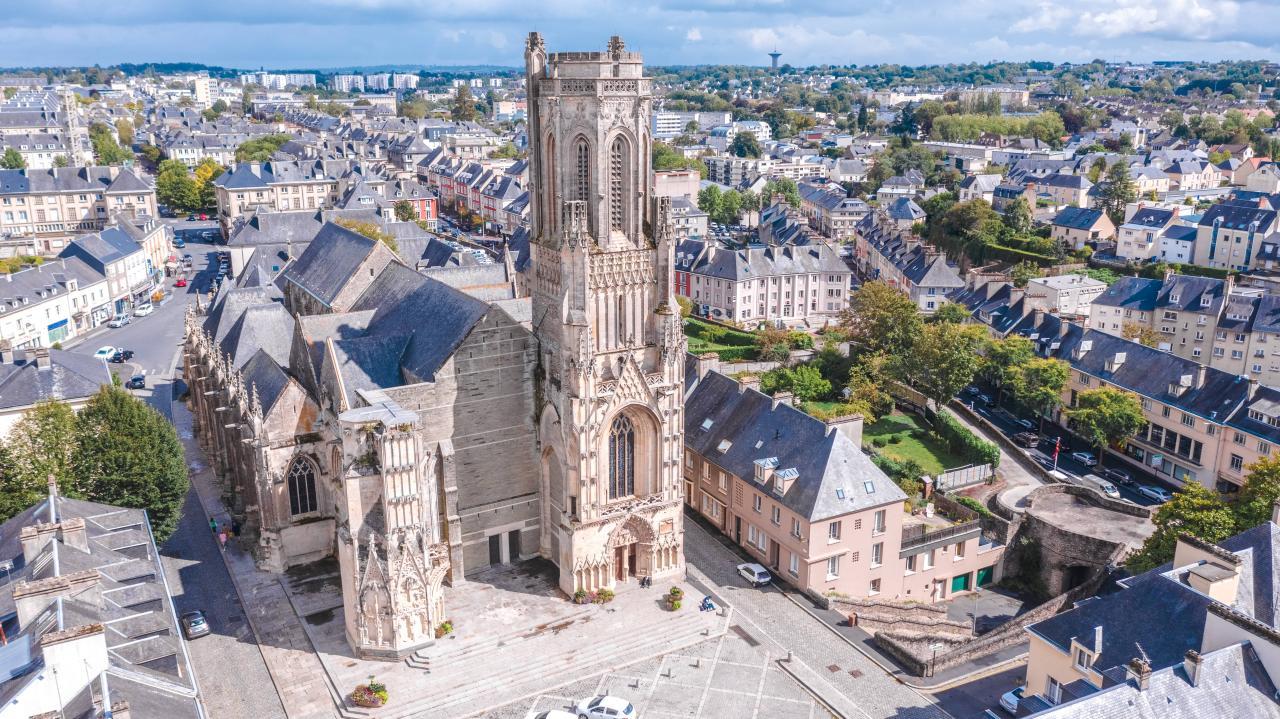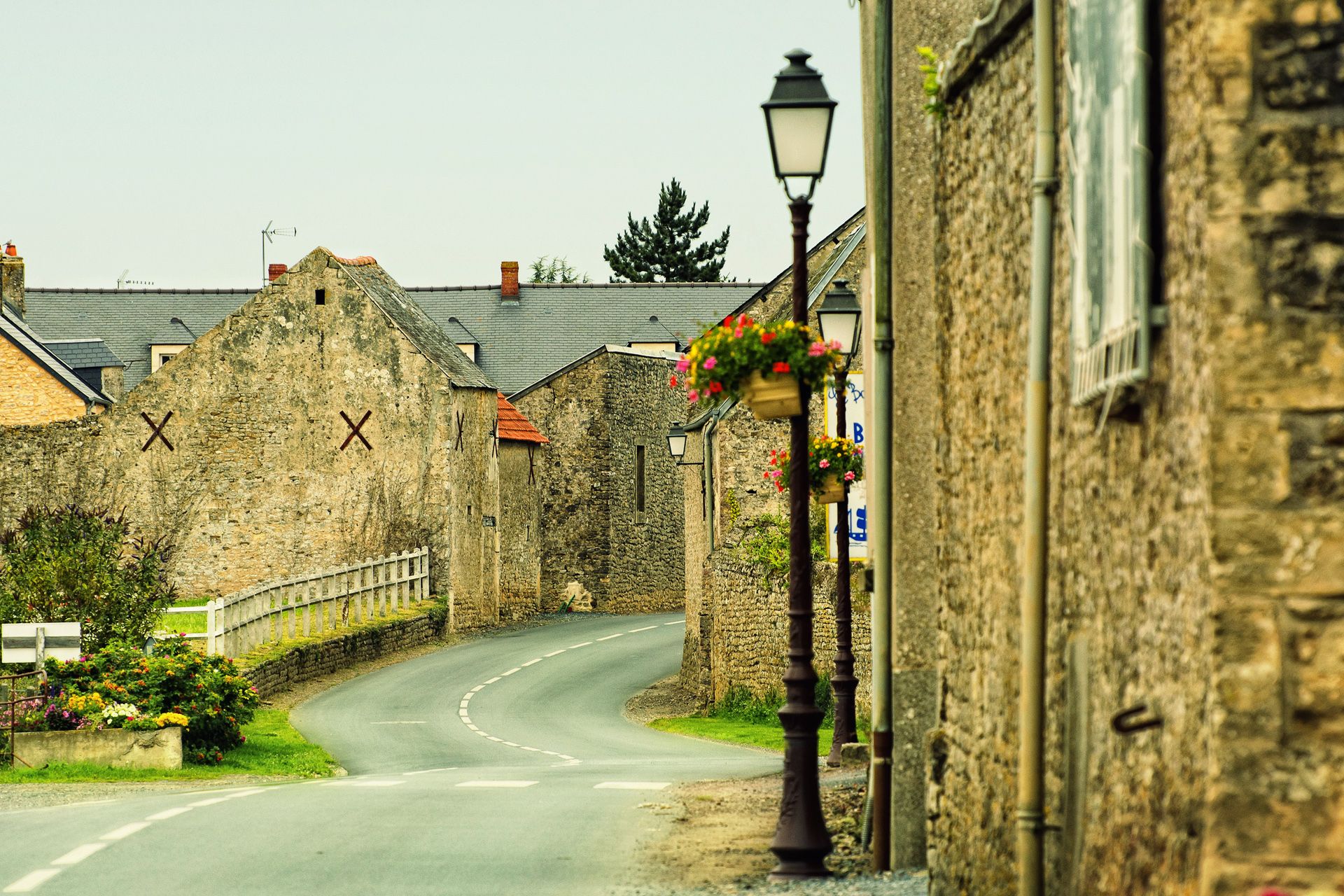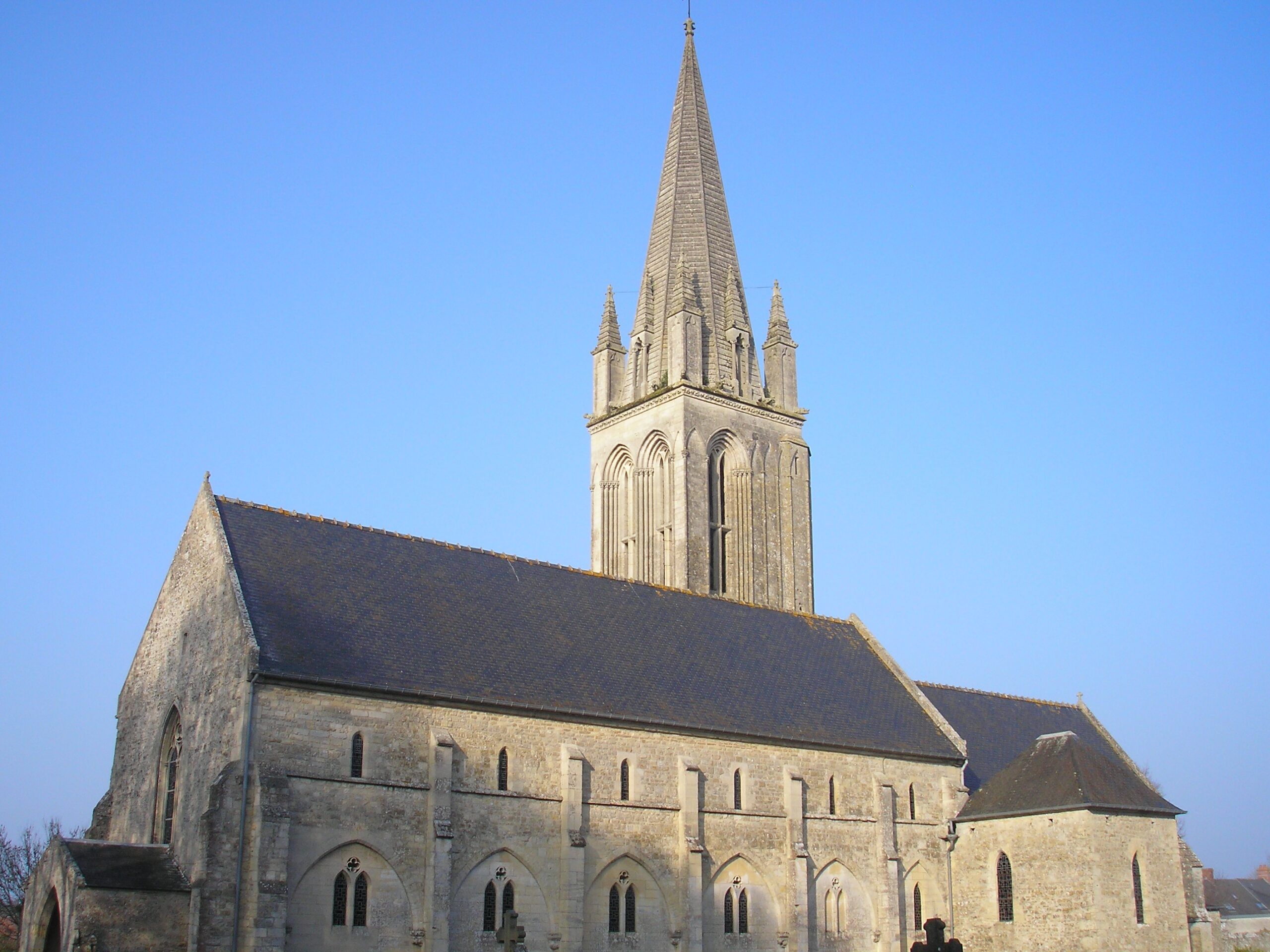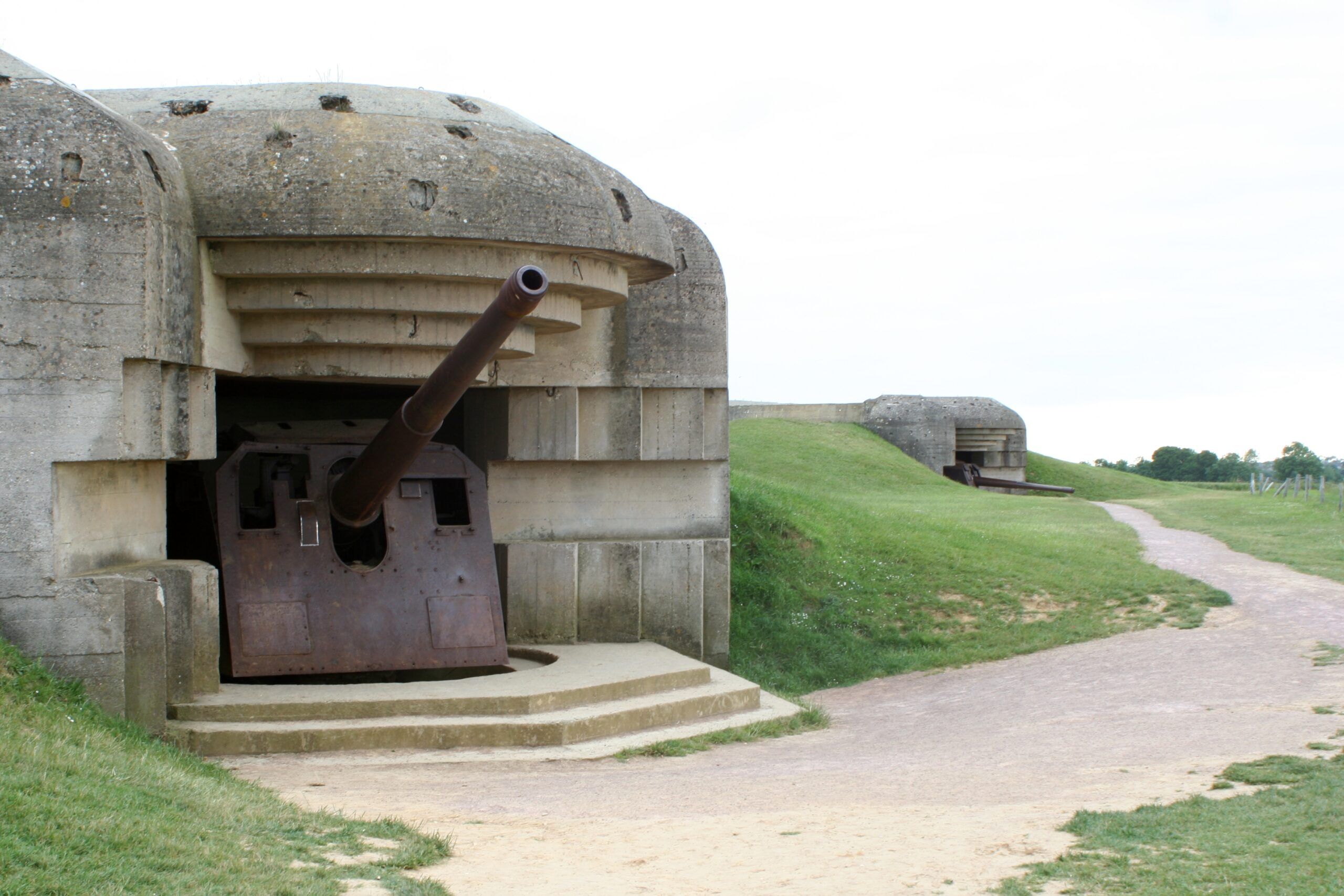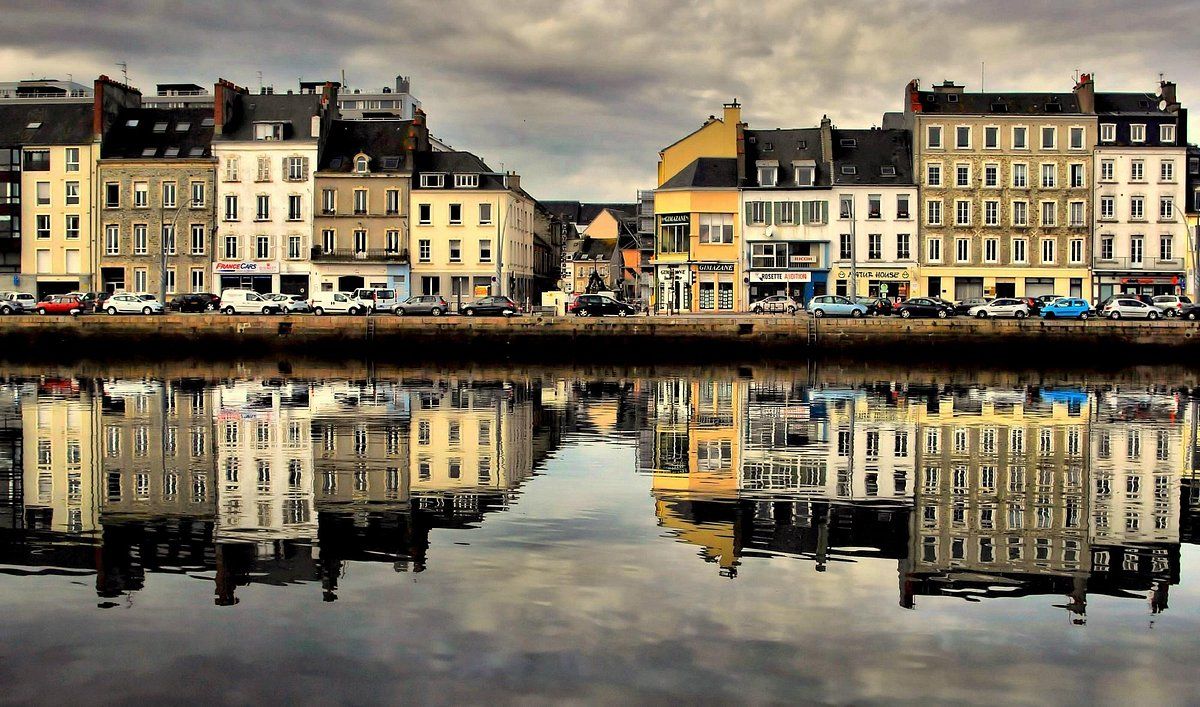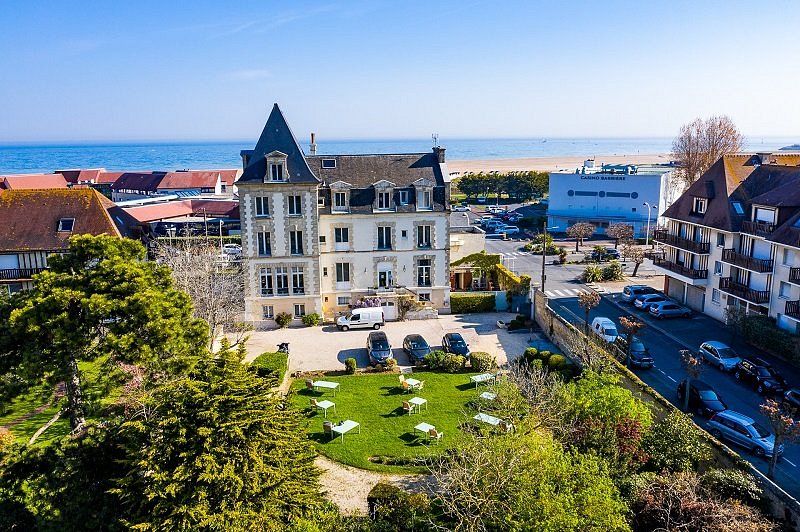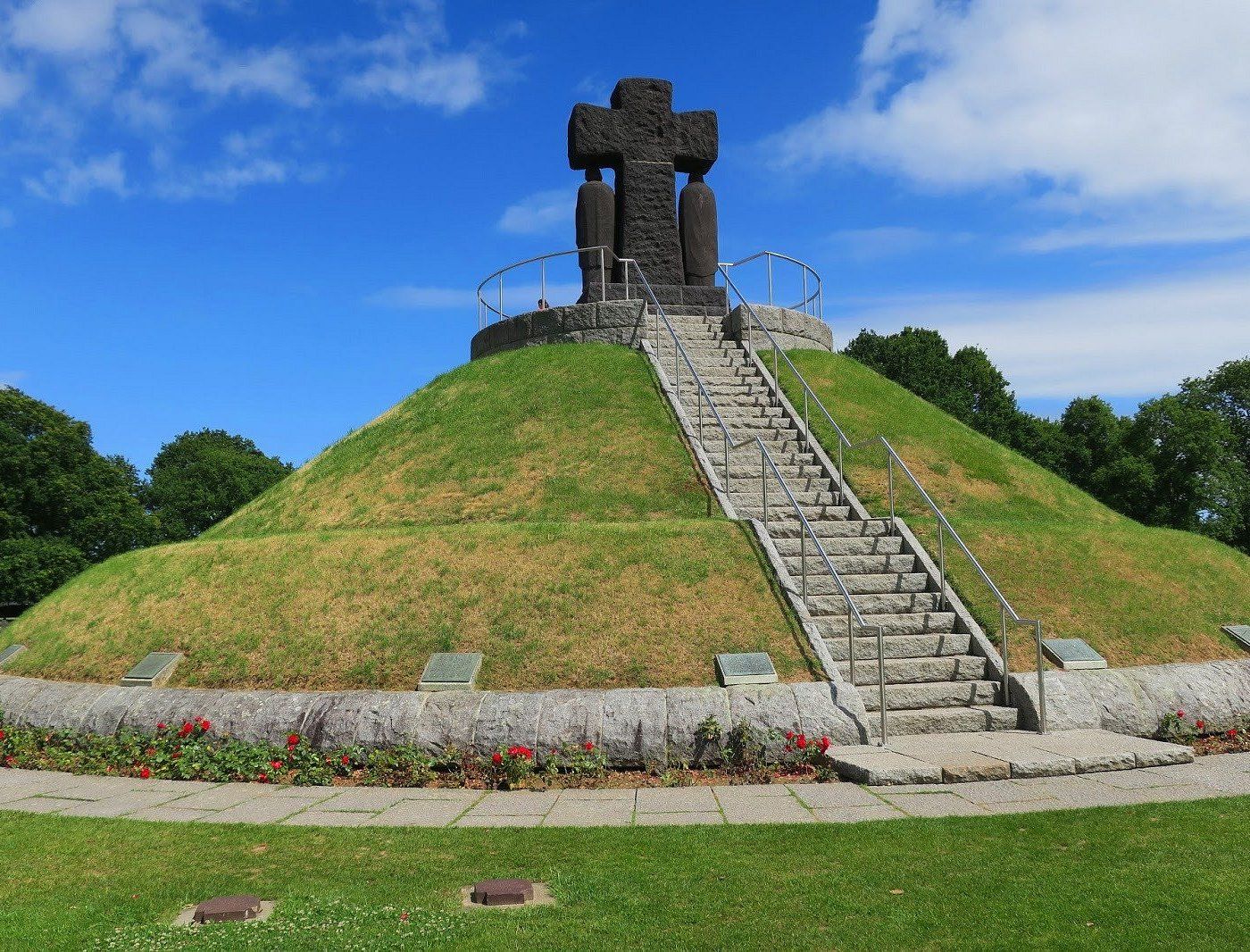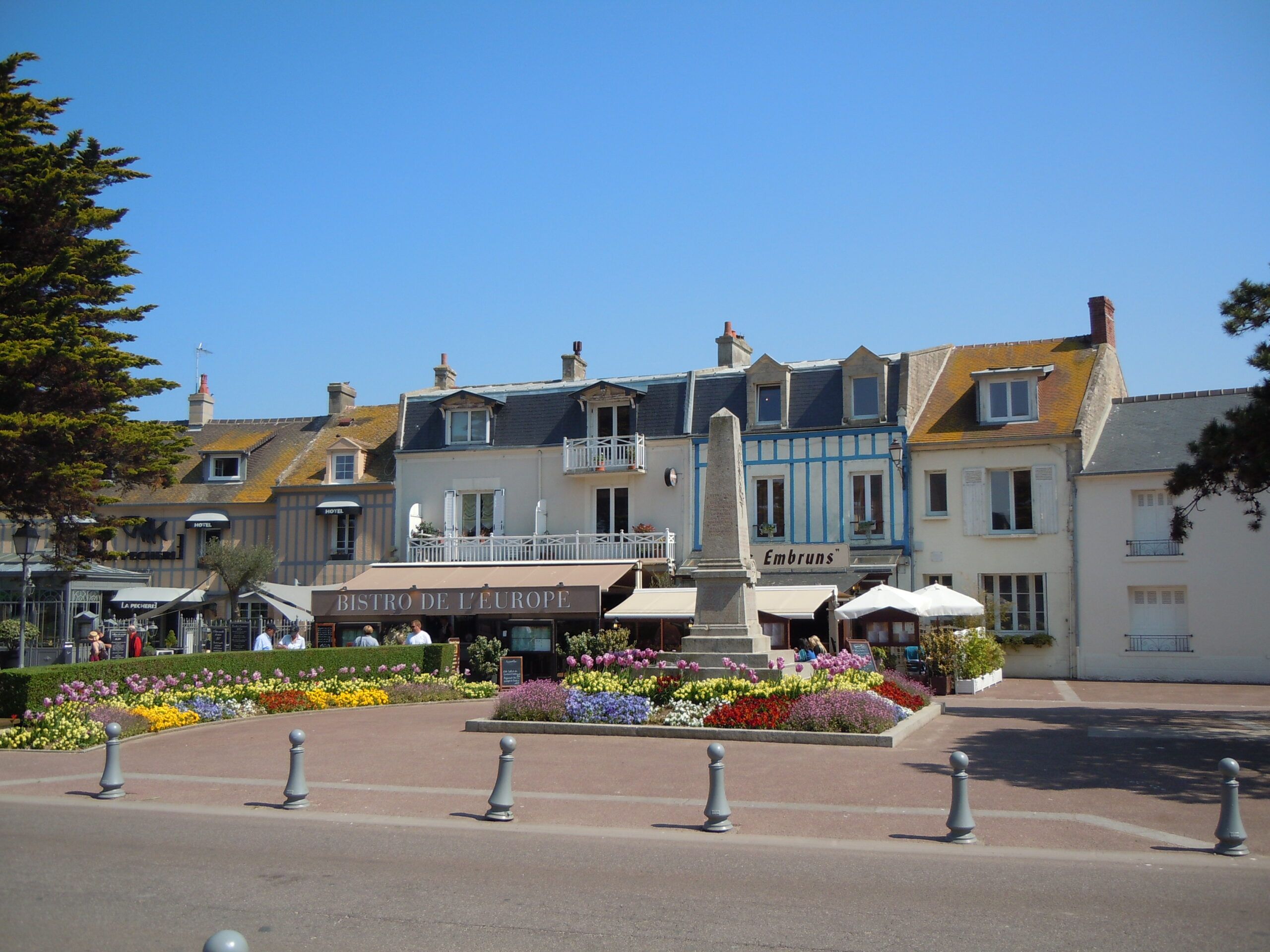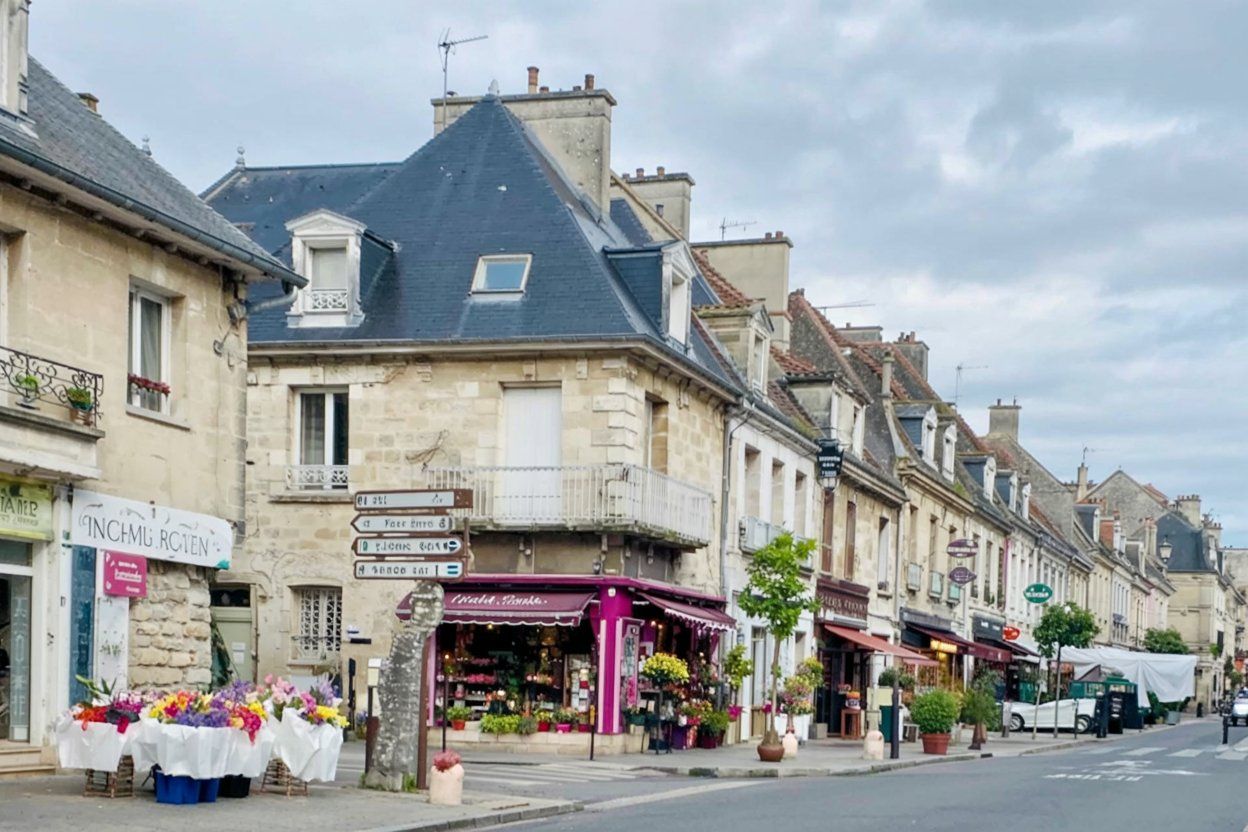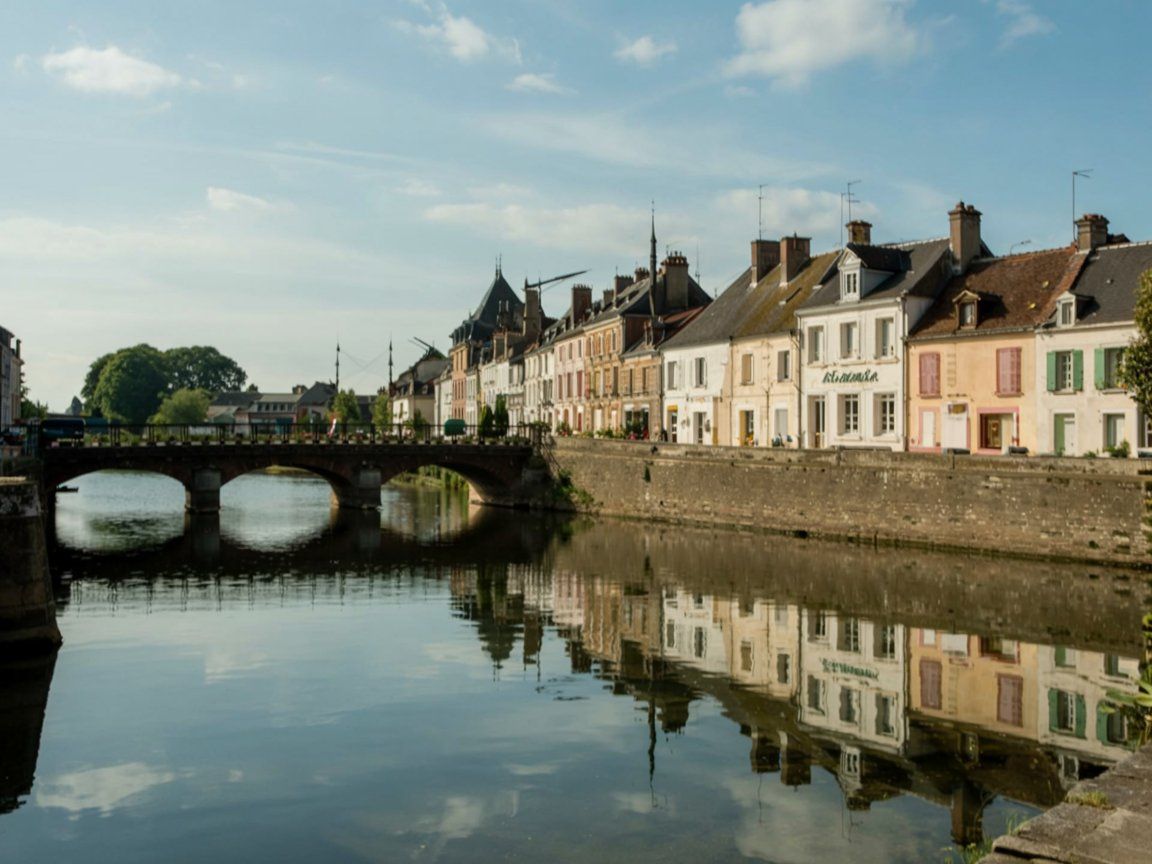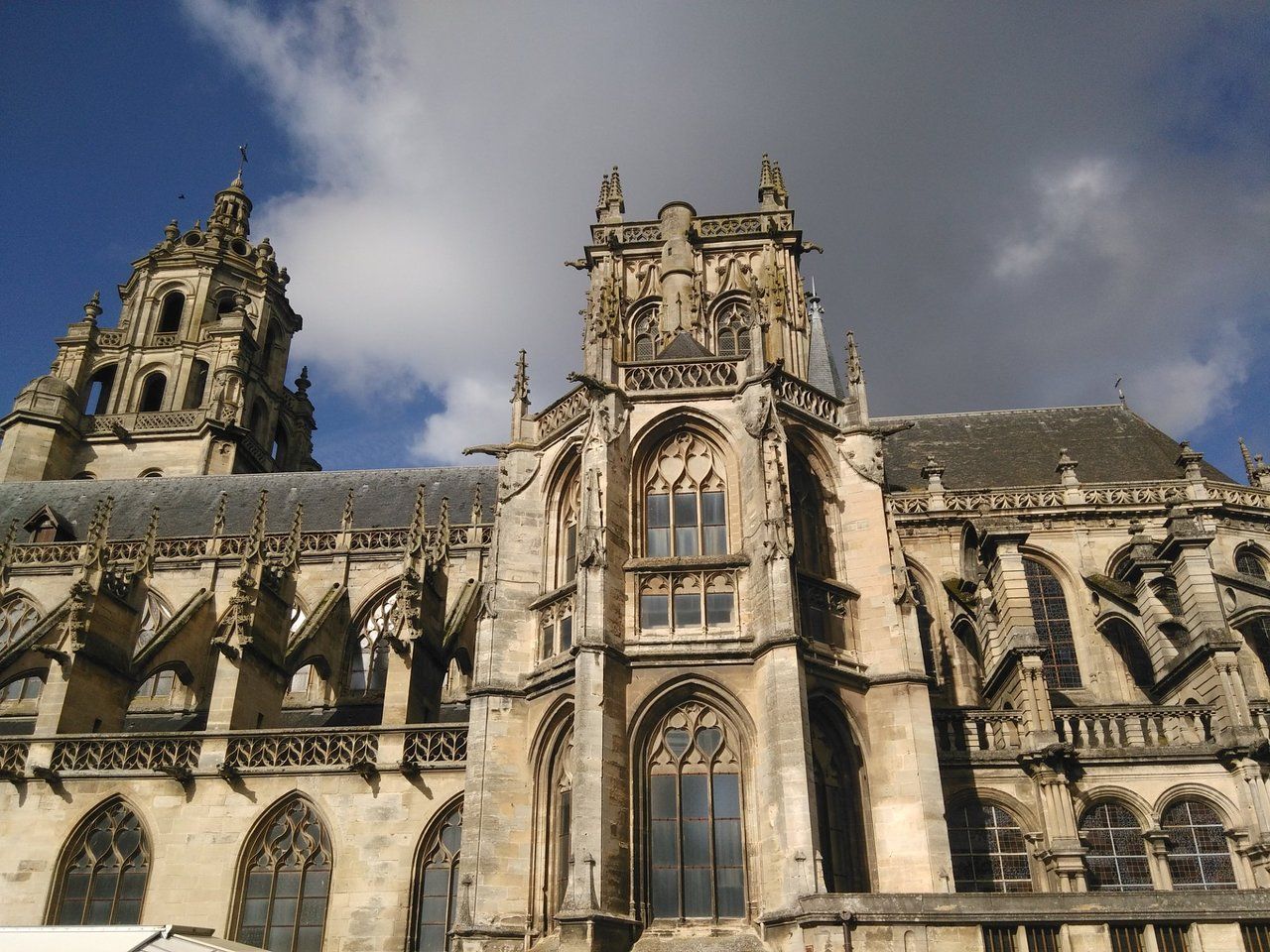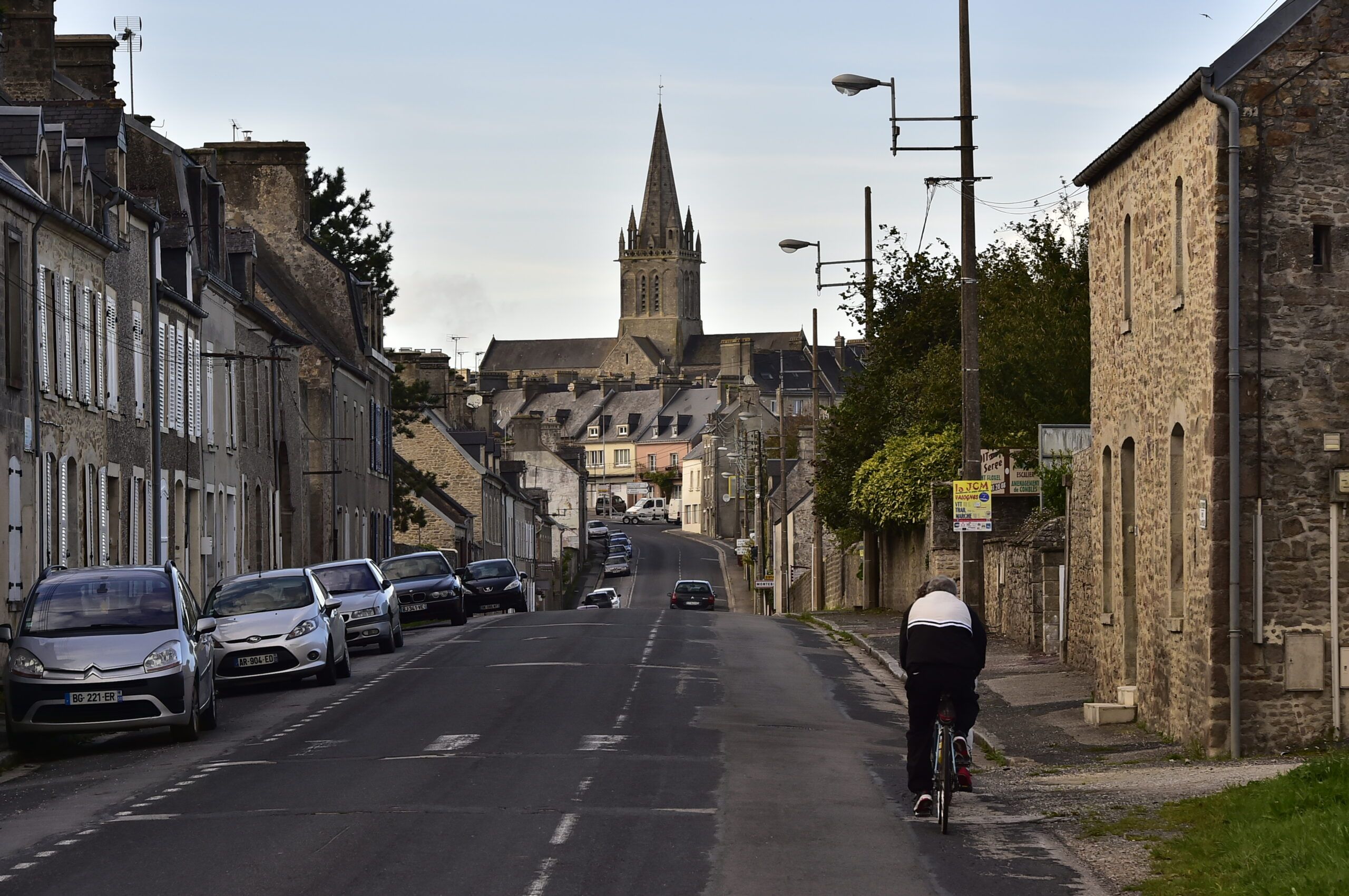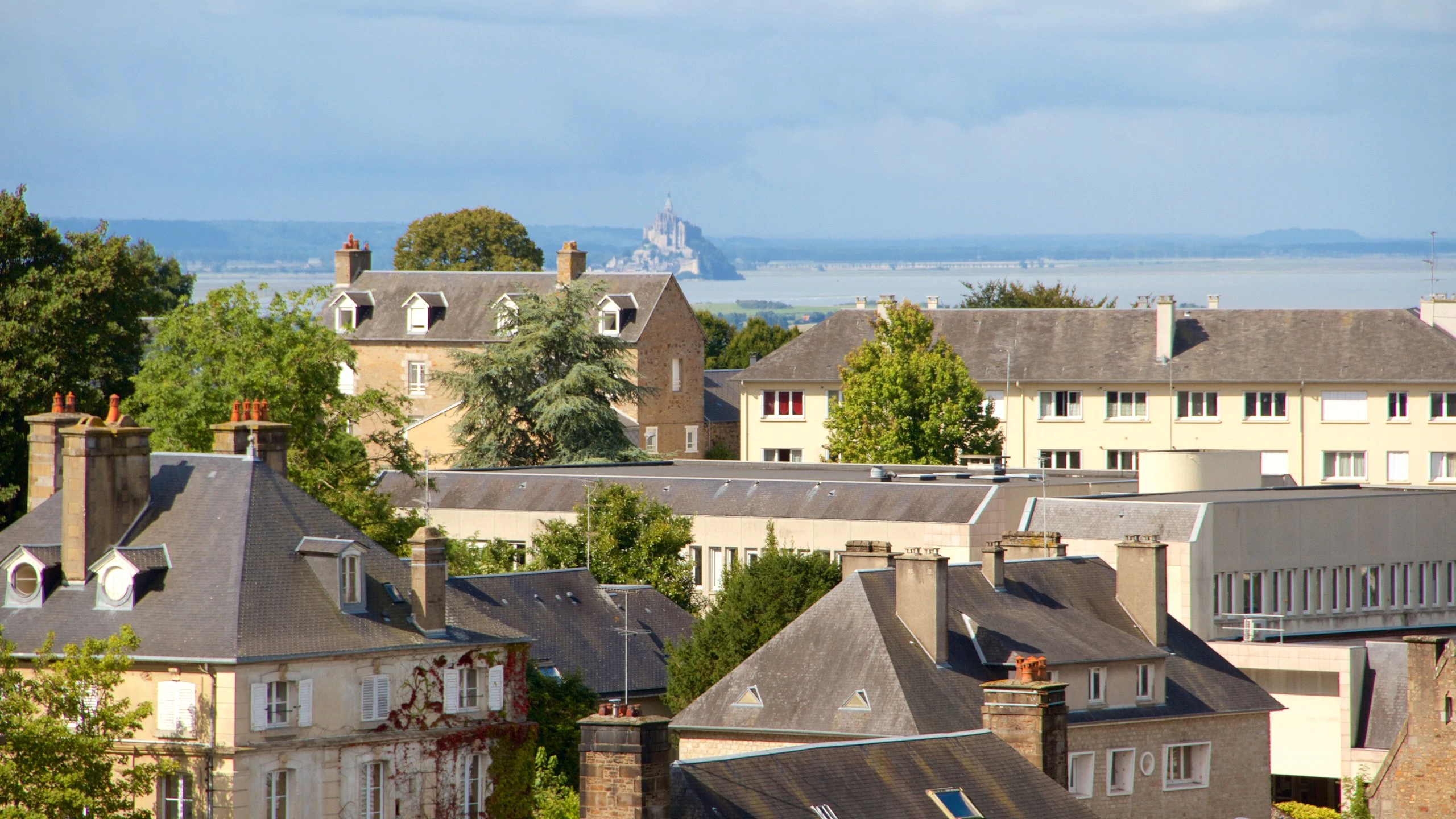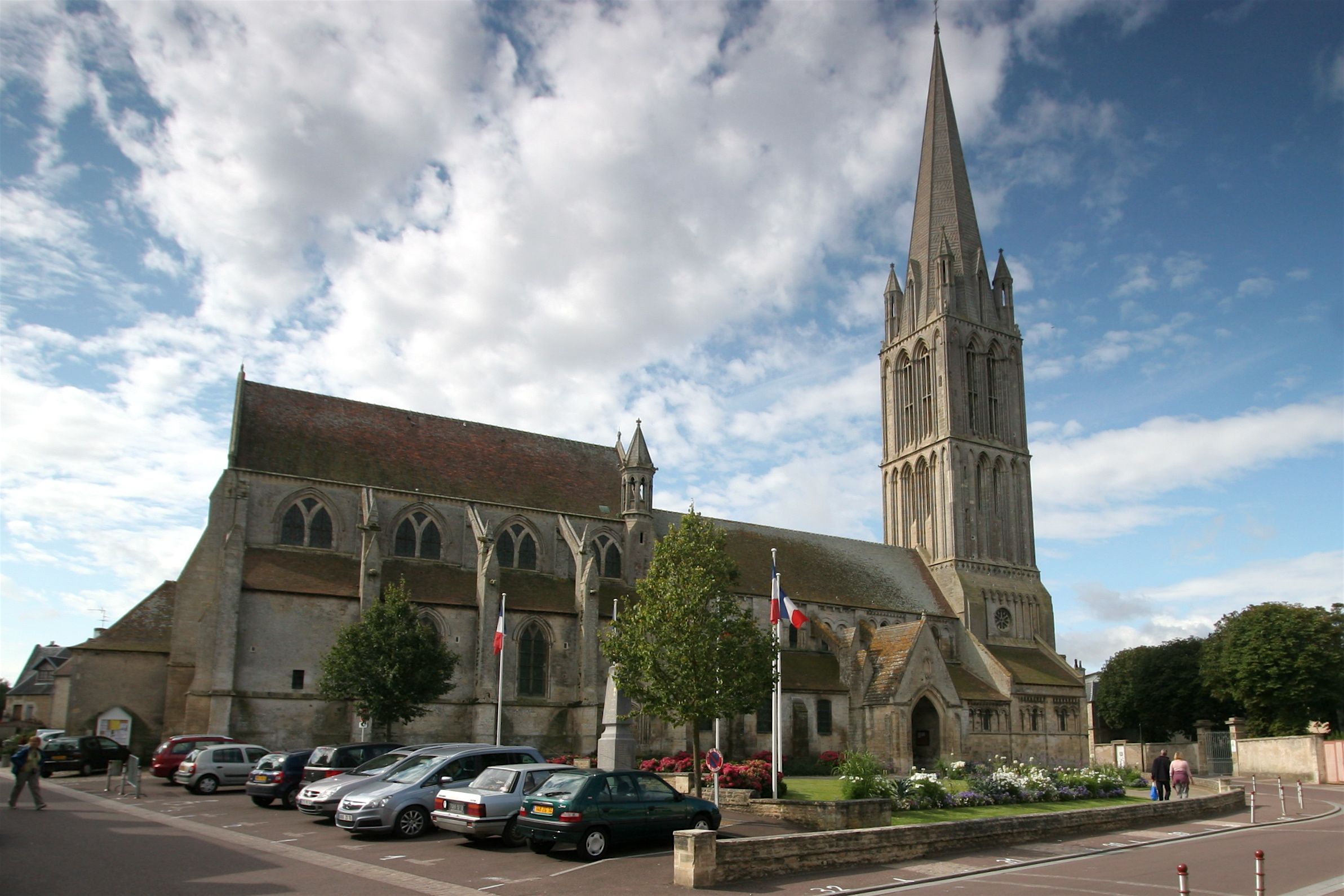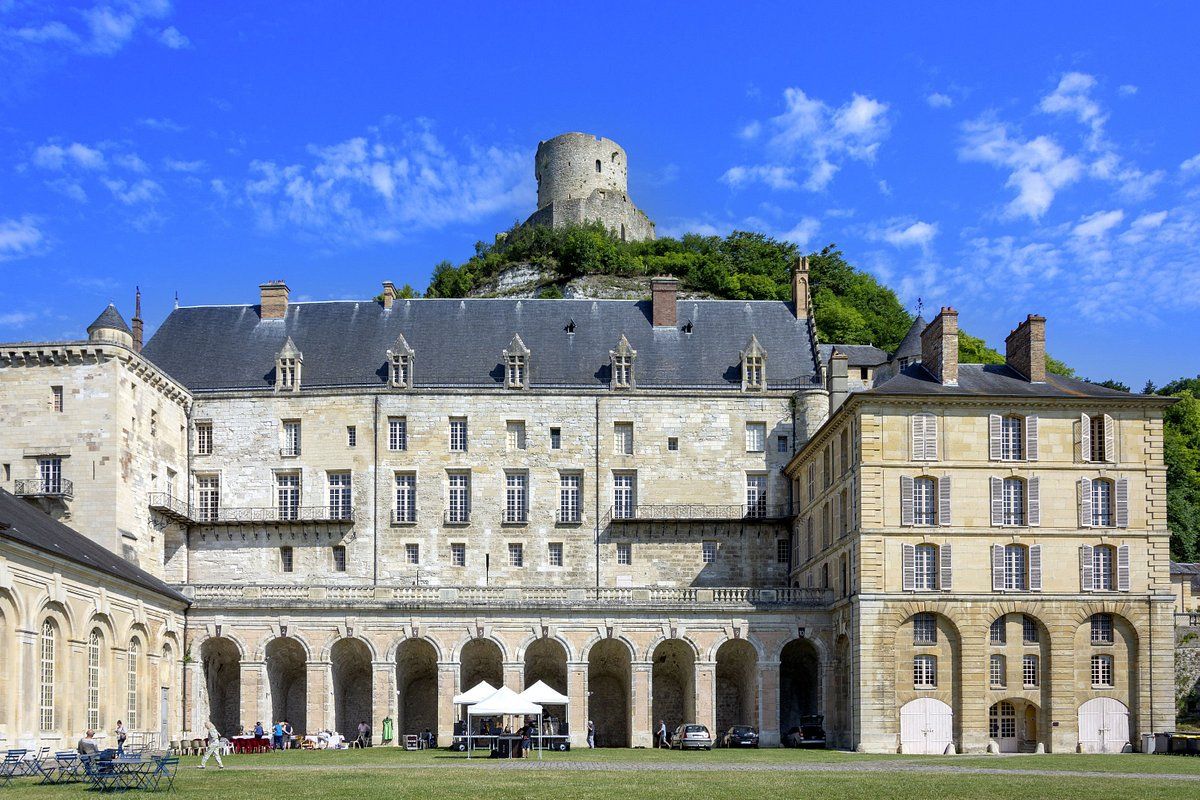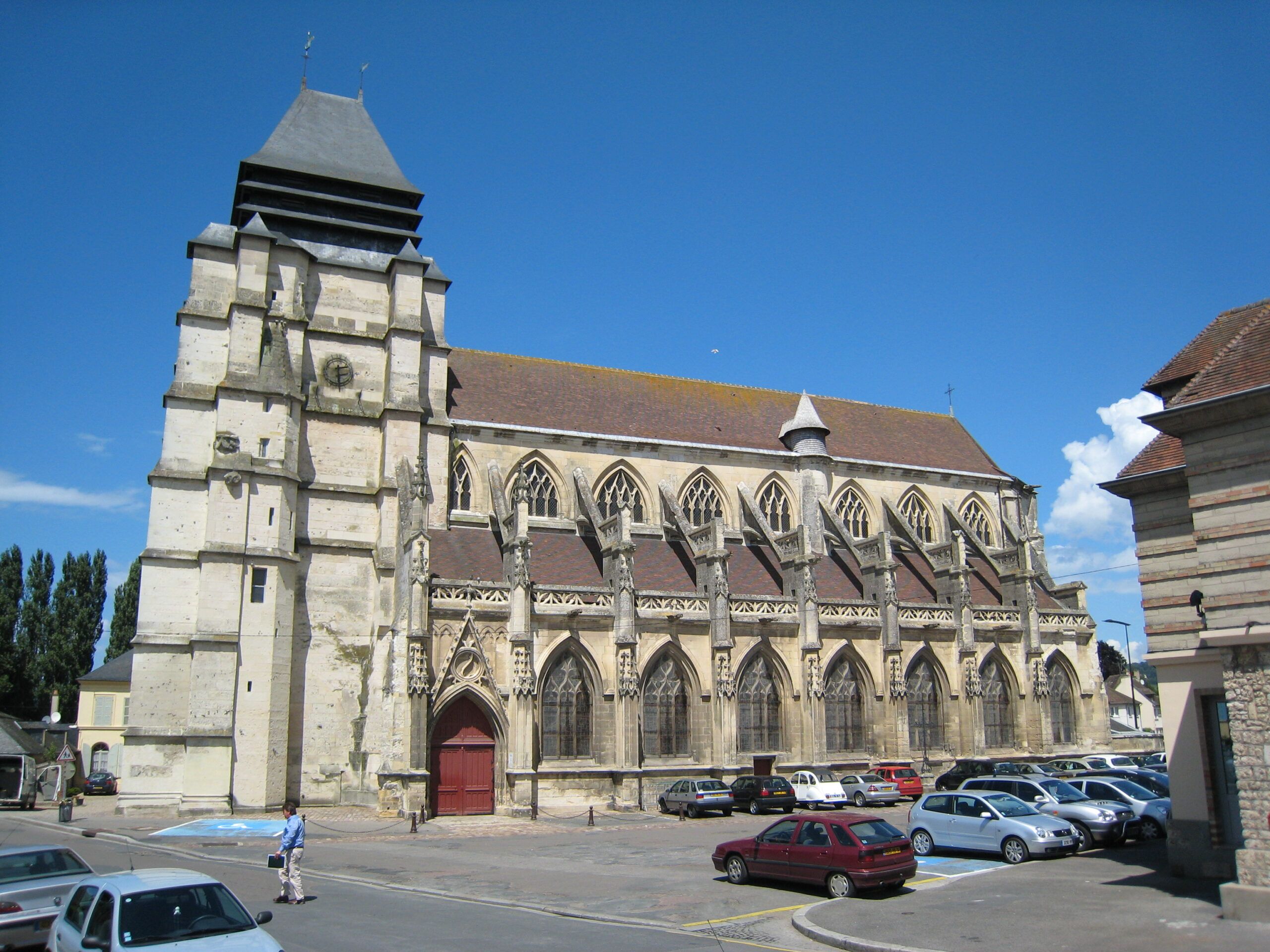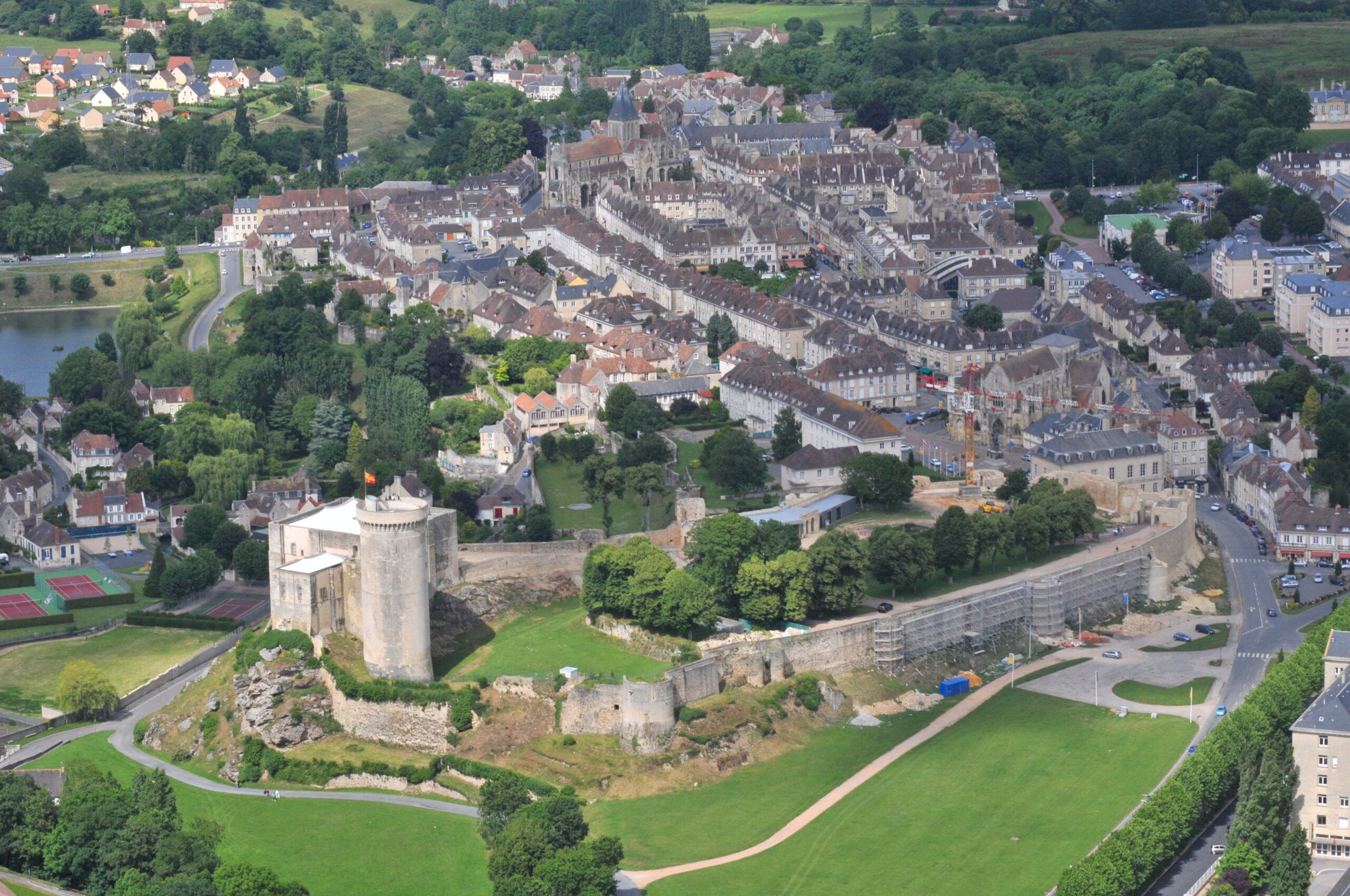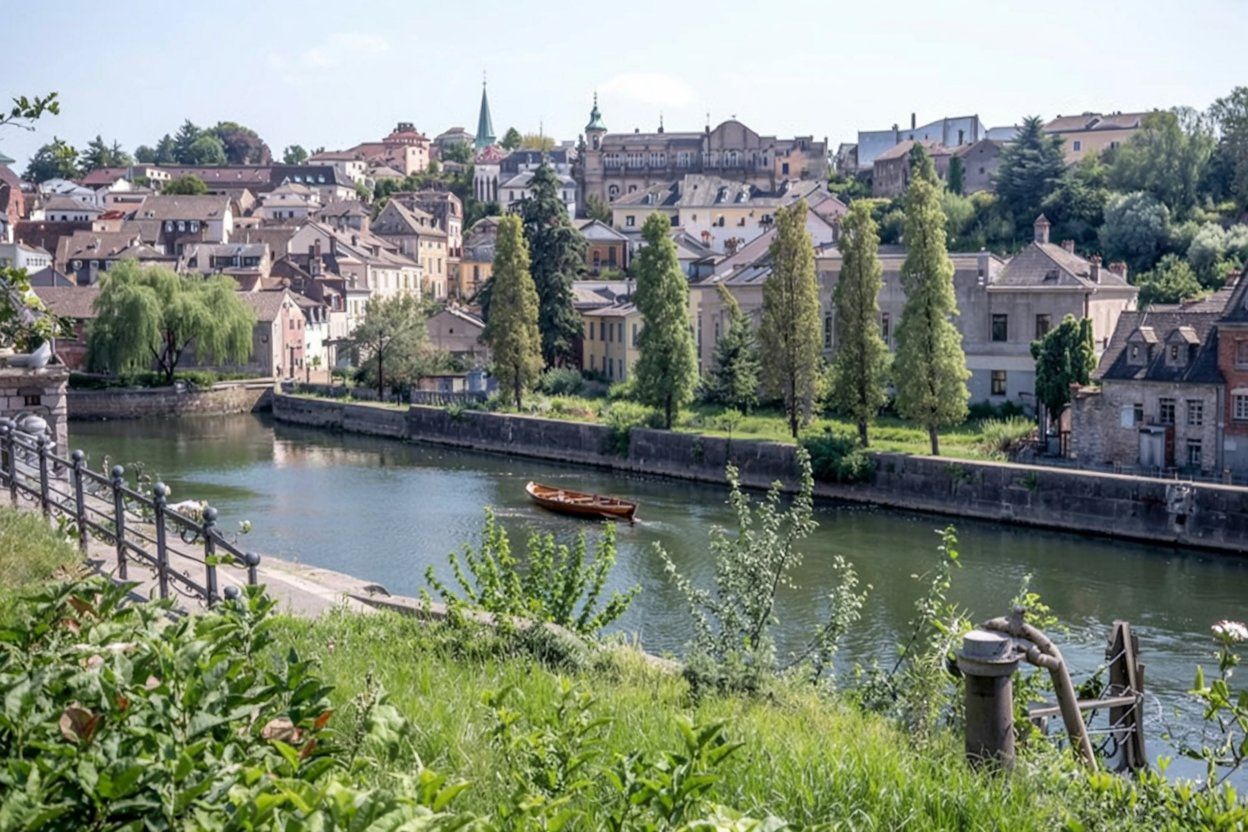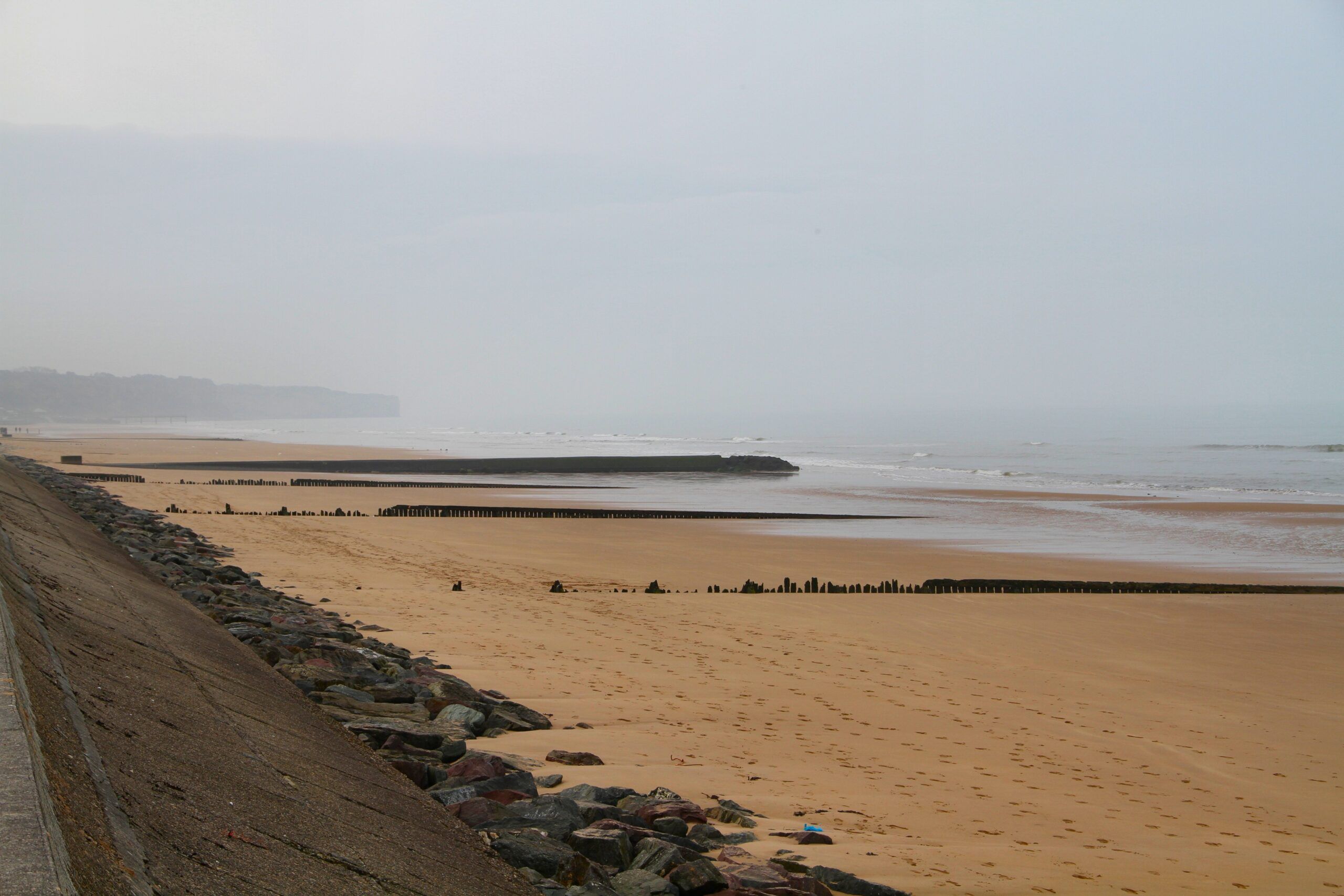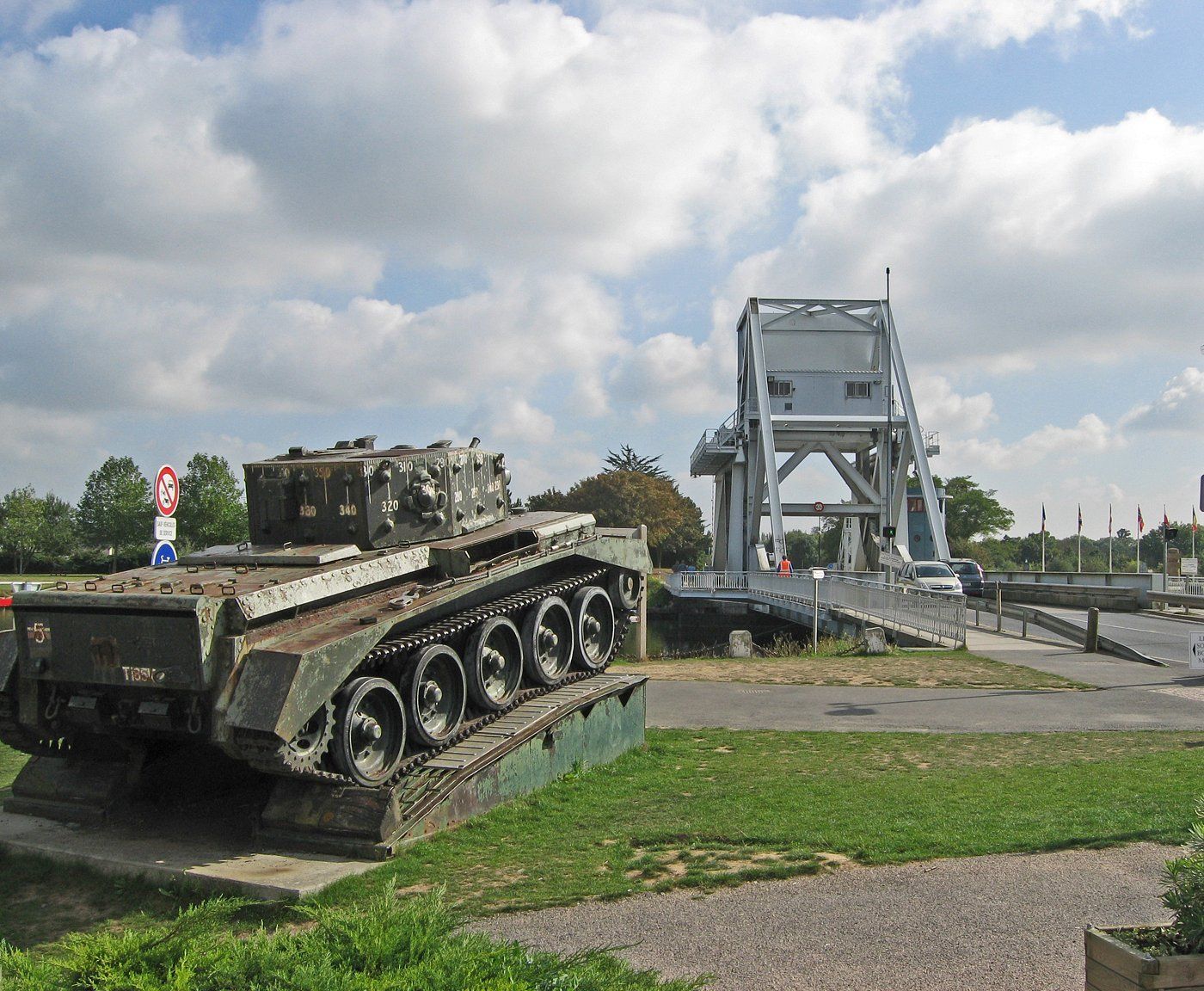Sainte-Mère-Église sits right at the core of D-Day history, attracting crowds every year to this once-sleepy Normandy town. Walking its streets, you’re literally stepping where American paratroopers landed in the early hours of June 6, 1944. Because the town sits at a crossroads, it became absolutely crucial for Allied plans to break German control over France.
Visiting Sainte-Mère-Église puts you in touch with one of the most unforgettable sites of the Normandy landings, where history still lingers in the landmarks and memorials. As you wander, you’ll spot 15 information panels that guide you through places that witnessed that dramatic day. The church stands out—its steeple forever tied to the paratrooper whose chute snagged during the invasion.
Visit Recommended D-Day historic hotels and B&Bs along the invasion beaches.
This town is a great jumping-off point for a Normandy D-Day tour, right along the N13 and within easy reach of both Utah and Omaha beaches. Whether you’re a die-hard history fan or just curious, Sainte-Mère-Église gives you a real sense of the sacrifices that shaped today’s world.
D-Day and World War II Significance
Sainte-Mère-Église played a pivotal role during the Allied invasion of Normandy on June 6, 1944. Its location and the events that happened here have made it a magnet for visitors from all over.
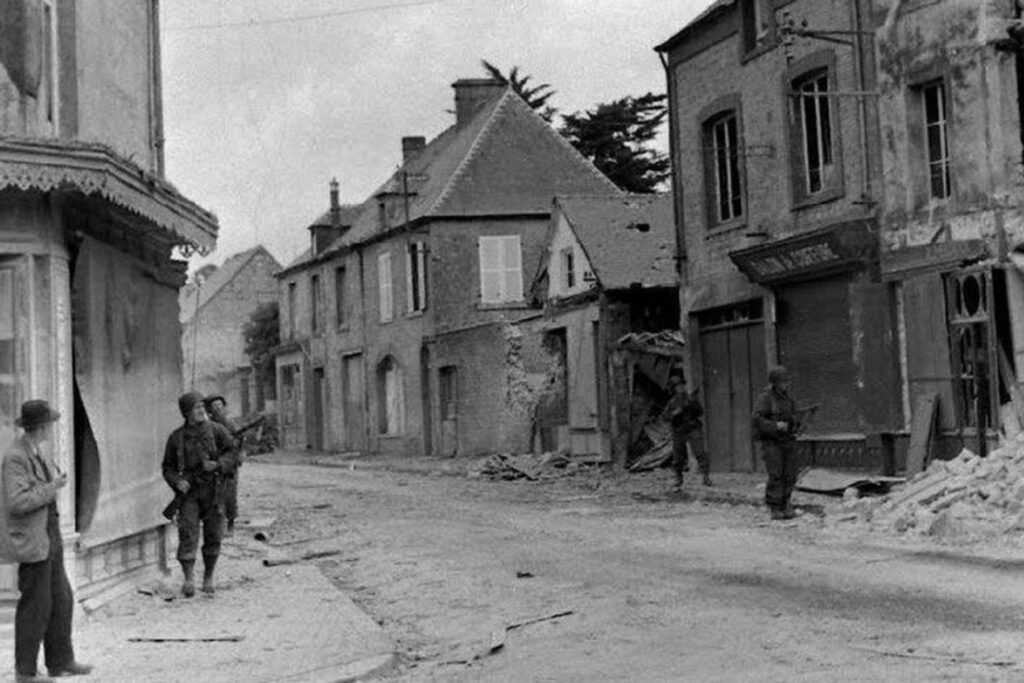
Role of Sainte-Mère-Église During D-Day
Sainte-Mère-Église shot to fame as one of the very first French towns freed in Operation Overlord. During the night, American paratroopers from the 82nd and 101st Airborne Divisions dropped into and around the town. Their job? Secure this crossroads and block German reinforcements from reaching the beaches.
The church steeple became an accidental icon. Paratrooper John Steele’s chute caught on it, and he dangled there for hours while chaos erupted below. Today, a parachute mannequin still hangs from the church, marking the spot.
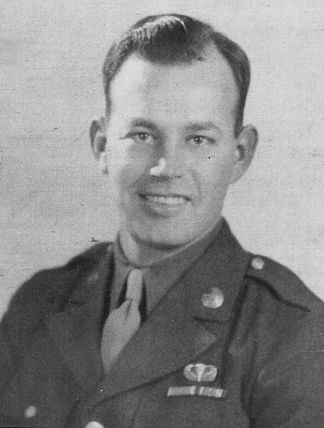
By morning, after fierce fighting and heavy losses, American troops had taken Sainte-Mère-Église. That early win set the tone for the rest of D-Day.
Strategic Importance in World War II
Sainte-Mère-Église’s crossroads made it a key control point during the Normandy invasion. The town links vital roads across the Cotentin Peninsula, so whoever held it could move troops and supplies fast.
The Germans knew this and stationed troops here to protect the routes. When the Allies took Sainte-Mère-Église, they could:
- Stop German reinforcements heading to Utah and Omaha beaches
- Hold the western side of the invasion area
- Control movement between Cherbourg and the rest of Normandy
- Set up a base for pushing further inland
Controlling the town also messed with German communications, causing confusion and giving the Allies a real edge in those first, tense hours.
Key Historical Events
The night before the big paratrooper drop, a building in the town square caught fire. As locals scrambled to put out the flames, German soldiers and townsfolk crowded into the square—right as the first paratroopers started landing.
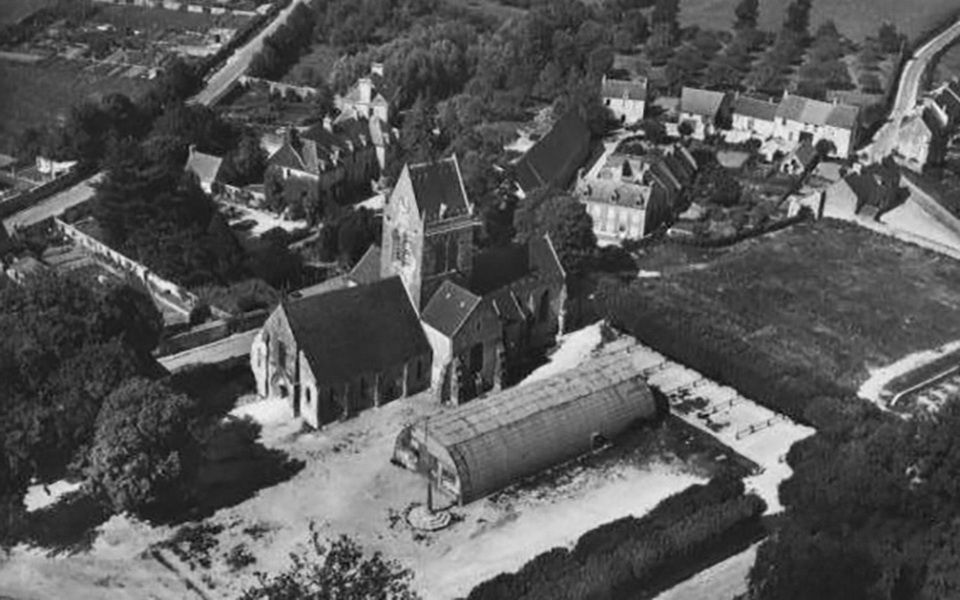
Standout moments:
- The midnight fire in the square, June 5-6
- Initial pathfinder drops marking landing zones
- Main paratrooper waves hitting around 1:30 AM
- Intense fighting throughout the town
- The German garrison’s capture by morning
- Lieutenant Colonel Edward Krause raising the American flag over the town hall
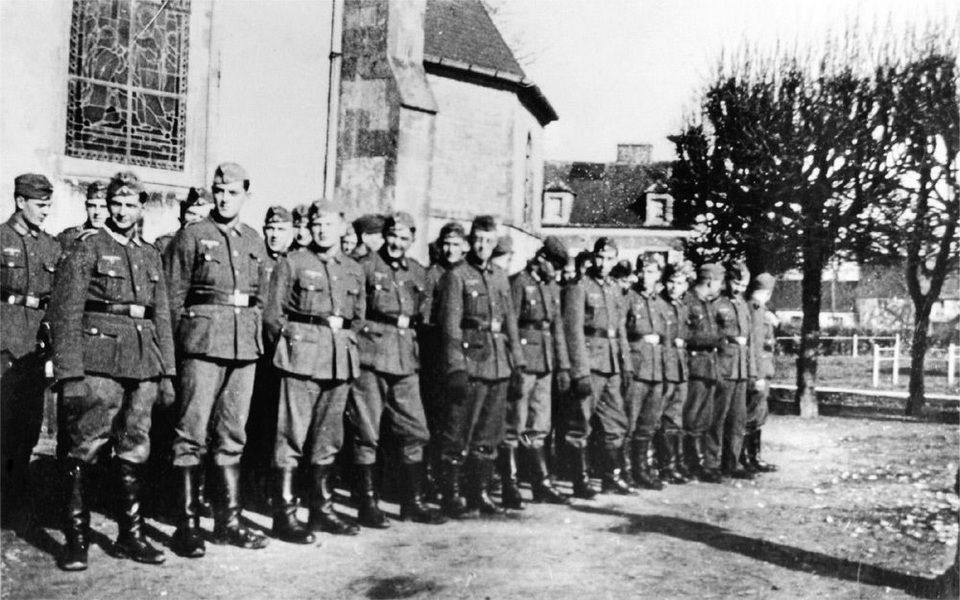
The 1962 film “The Longest Day” dramatized these events, putting Sainte-Mère-Église on the world map. Many veterans returned after the war, building a lasting bond between the town and American forces.
Historic Landmarks and Memorials
Sainte-Mère-Église is packed with sites that tell the story of D-Day and honor those who fought here. These landmarks make the town’s role in World War II feel personal and real for anyone who visits.
The Church of Sainte-Mère-Église
This church, right in the center of town, is probably the most recognized symbol of the D-Day landings. Its fame comes from John Steele, the American paratrooper who got stuck on the steeple during the night drop.
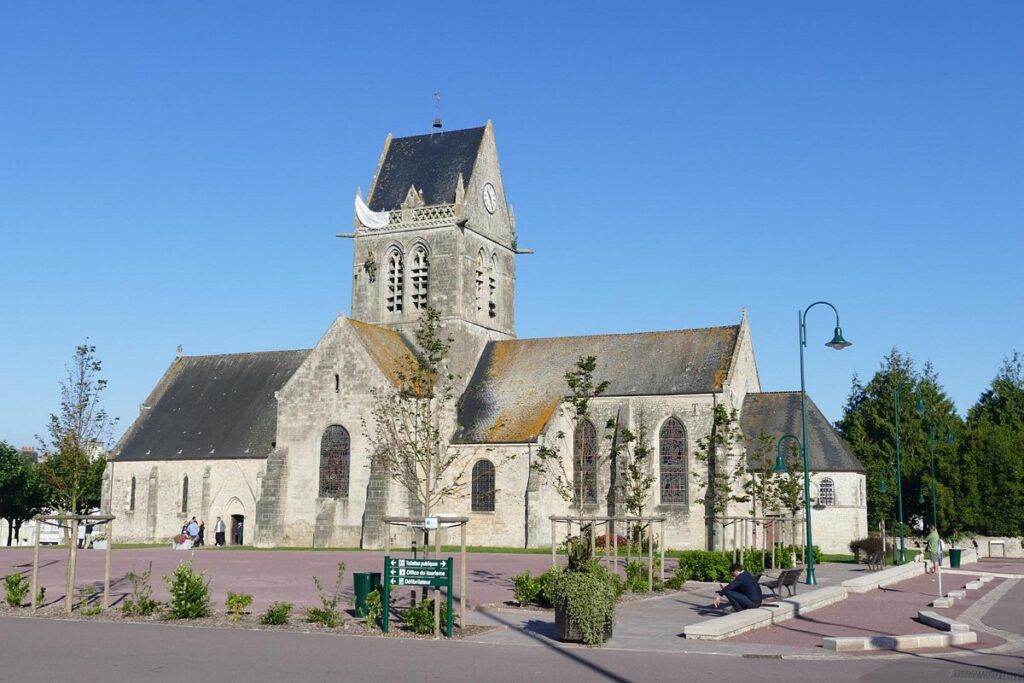
These days, a parachute with a mannequin hangs from the church tower, making the story impossible to miss. Step inside and you’ll see postwar stained glass windows showing the Virgin Mary with American paratroopers descending—a unique tribute.
The church square itself saw fierce fighting as U.S. troops battled to secure the town. Standing here, you can almost picture the confusion and bravery of that night.
Airborne Museum
Just next door to the church, the Airborne Museum gives you a deep dive into airborne operations on D-Day. The collection is impressive—vehicles, weapons, uniforms, and personal mementos from the paratroopers themselves.
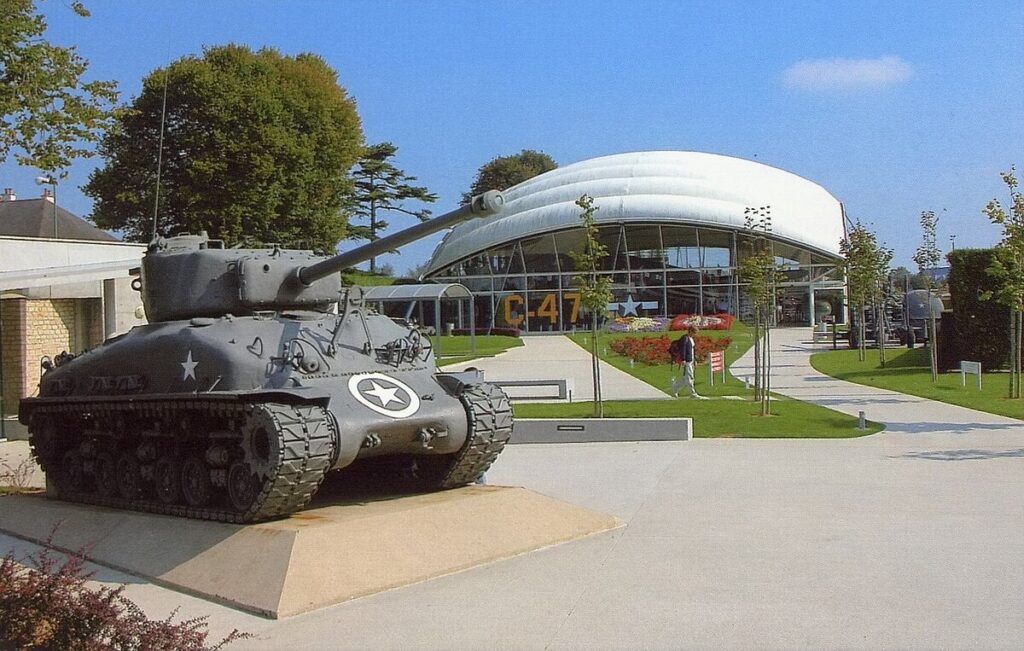
The museum has three main buildings:
- Building WACO: Home to a real Waco glider
- Building C-47: Features a Douglas C-47 used in the landings
- Operation Neptune Building: Delivers immersive experiences
Interactive exhibits let you feel (almost) what it was like to jump into occupied France. Personal stories and artifacts make the massive military operation feel human.
The museum keeps things fresh, updating displays and using technology to engage visitors of all ages.
D-Day Memorials and Monuments
All around Sainte-Mère-Église, you’ll find memorials for those who fought and died during the liberation.
The La Fière memorial marks a key battle where American paratroopers held a bridge against German attacks. That little bridge saw days of brutal fighting.
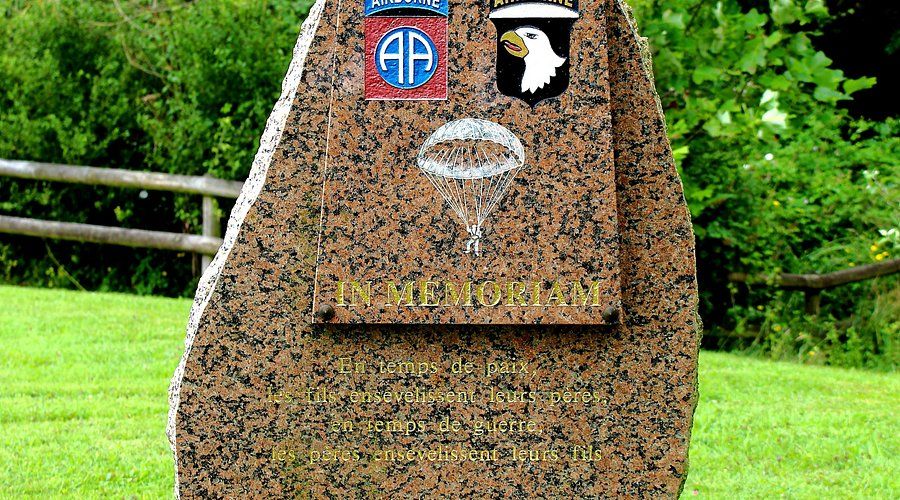
Close to the church, monuments honor specific units—like the 82nd and 101st Airborne Divisions. Many list the names of fallen soldiers.
If you want to expand your visit, Utah Beach is just 6 miles away, and Omaha Beach about 31 miles. Both beaches have their own memorials, museums, and markers that build on what you’ll see in Sainte-Mère-Église.
Exploring the Normandy Landing Beaches
The D-Day landing beaches stretch along the Normandy coast, each one with its own chapter in the story of June 6, 1944. The five beaches—Utah, Omaha, Gold, Juno, and Sword—still show signs of history’s largest amphibious invasion.
Stay steps from Omaha Beach and historic landmarks. Best rates on local accommodations.
Utah Beach and Its History
Utah Beach, the westernmost landing zone, saw American troops come ashore. The 4th Infantry Division landed here and, thanks to strong currents pushing them to a quieter sector, met less resistance than expected.
You can walk through the Utah Beach Museum, set in a former German bunker. Inside, you’ll find a preserved B-26 bomber and all sorts of landing artifacts.
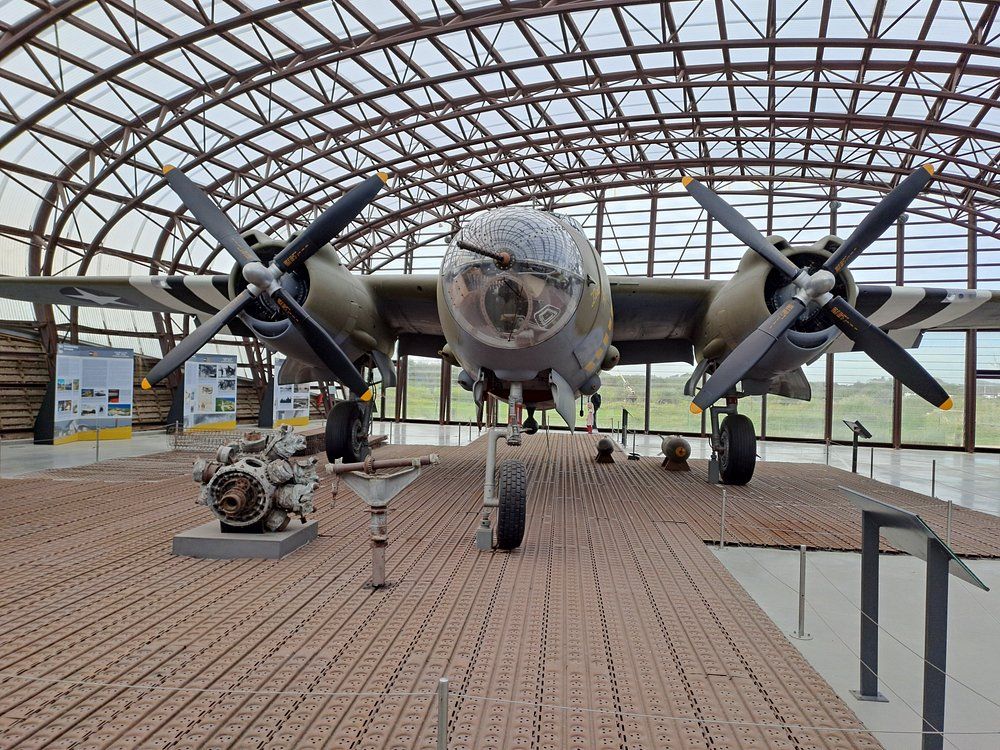
The beach itself is calm now, with gentle dunes and wide sands. Memorials mark the key landing sites and combat areas.
Don’t miss the Monument to the 4th Infantry Division near the museum. There are several German bunkers along the coast you can poke around in, too.
Nearby villages also played big roles in securing this part of Normandy.
Omaha Beach and the American Forces
Omaha Beach was the scene of some of D-Day’s toughest fighting. U.S. forces ran into fierce German defenses and suffered heavy losses—no wonder it’s called “Bloody Omaha.”
The beach stretches about 5 miles, from Vierville-sur-Mer to Saint-Laurent-sur-Mer. High bluffs gave German gunners a clear shot at the landing troops.
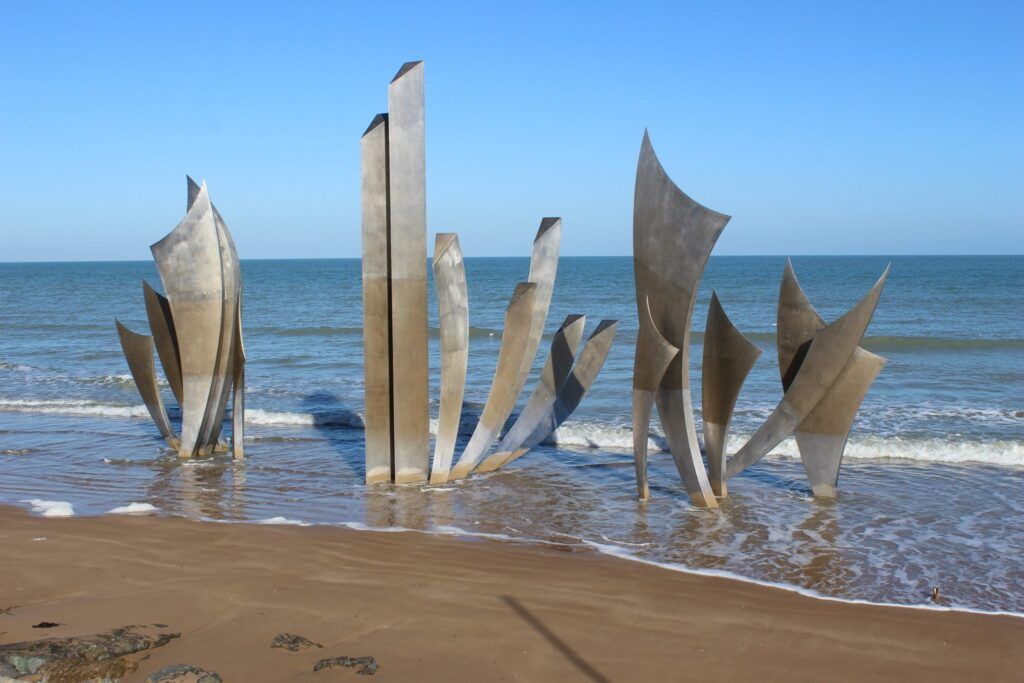
Today, the American Cemetery sits above the eastern end of Omaha Beach. Almost 10,000 white crosses and Stars of David, row after row, drive home the cost of liberation.
Monuments mark important battle spots, like the Les Braves sculpture at the water’s edge—a striking metal piece that stands for hope, freedom, and sacrifice.
Bunkers and old gun positions still dot the bluffs. Walking the beach, you can see just how hard it must’ve been for those soldiers under fire.
Pointe du Hoc and U.S. Rangers
Between Utah and Omaha beaches, Pointe du Hoc rises as a 100-foot cliff. U.S. Army Rangers scaled it using ropes and ladders, all while under enemy fire. Their goal: take out a German gun battery threatening both beaches.
The landscape is still pockmarked with huge bomb craters—some are 10 feet deep and 30 feet wide. It’s a wild sight and a reminder of the bombardment before the landings.
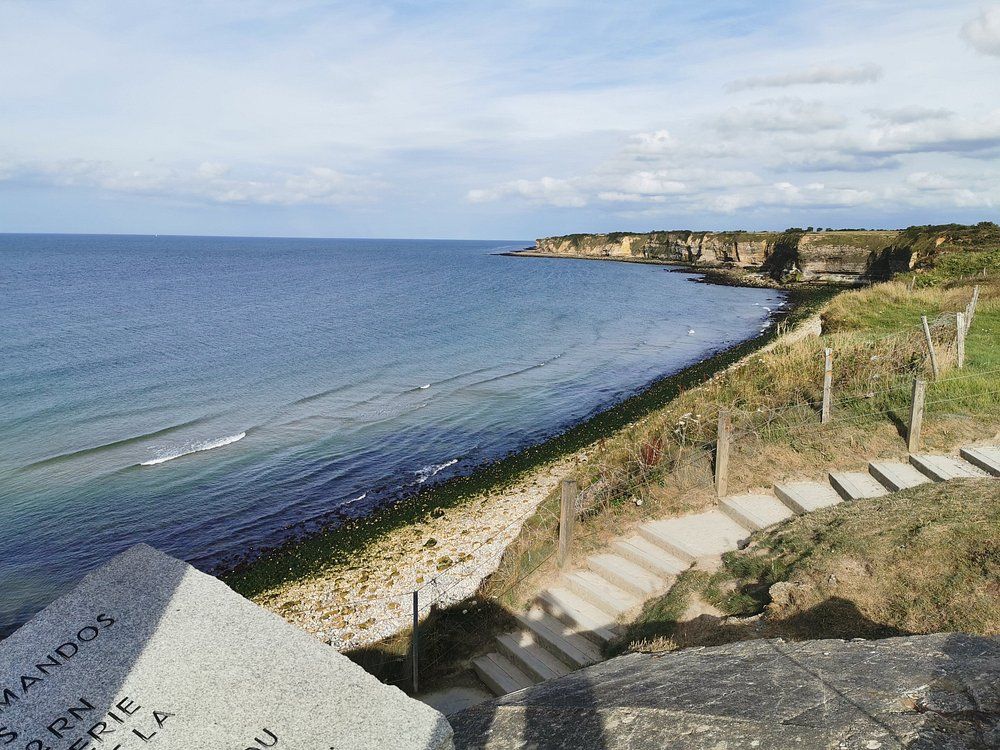
The Rangers’ assault stands out as one of D-Day’s gutsiest moments. Of the 225 men who started, only 90 could still fight by the end of the day.
You can explore the preserved German bunkers and observation posts. Concrete shelters once filled with artillery and ammo are open to visitors.
A memorial to the Rangers sits at the cliff’s edge. From there, you really get why this spot was so important to both sides.
Other Notable Beaches: Gold Beach & Arromanches
Gold Beach was assigned to British troops, who landed near the town of Arromanches. Their mission included capturing Arromanches to bring in vital supplies and reinforcements.
You can still see the remains of the artificial Mulberry Harbor just offshore. These giant concrete pieces were floated across the Channel to build a temporary port—pretty wild engineering, honestly.
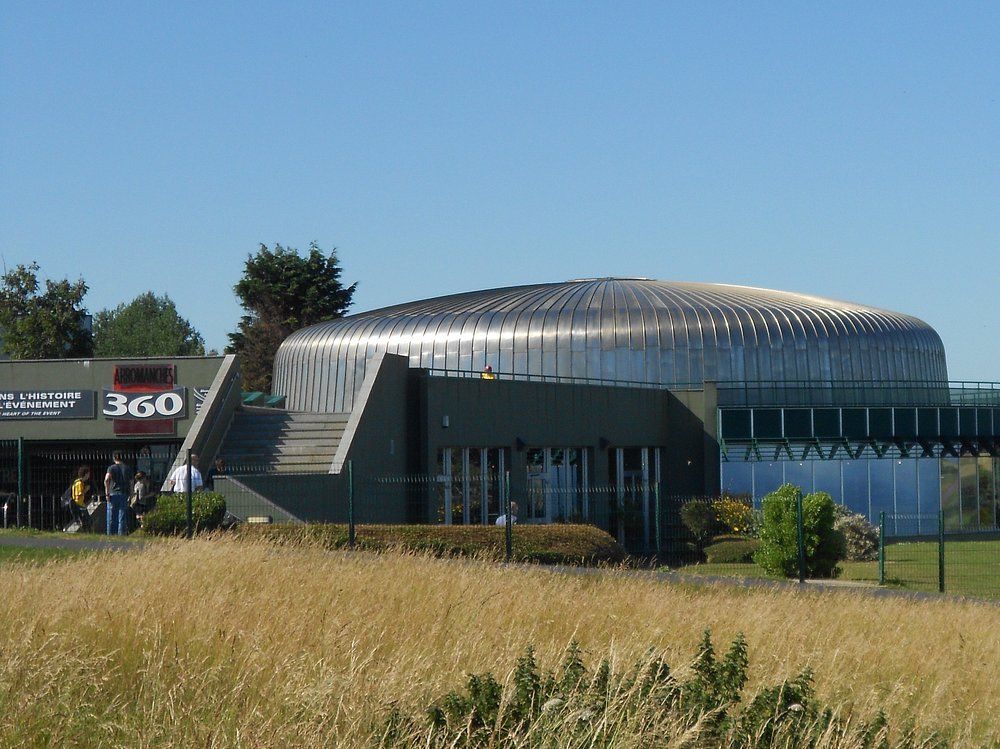
At the Arromanches 360° Cinema, you’re surrounded by archival footage on nine screens, showing how the harbor was built and used.
The D-Day Museum in Arromanches has a detailed model of the harbor and explains how it all worked. Outside, big chunks of the harbor still sit on the beach as permanent reminders.
From the bluffs above, you get sweeping views of the coastline—a great way to take in the sheer scale of what happened here in June 1944.
Museums and Educational Sites
Sainte-Mère-Église has a handful of key museums that help visitors connect with the D-Day landings and what they meant. These places use artifacts, personal accounts, and interactive exhibits to make history feel real—not just something in a textbook.
Find the perfect base for exploring Utah Beach, Pointe du Hoc, and beyond.
Airborne Museum
The Airborne Museum stands out as Sainte-Mère-Église’s main draw for anyone interested in D-Day history. It’s right next to the famous church where paratrooper John Steele got tangled on the steeple—a story that’s hard to forget. The focus here is on American airborne operations, and the museum doesn’t hold back.
Inside, you’ll wander through three sleek buildings, each with its own theme. There’s a real C-47 transport plane—the kind used in the invasion—and a trove of personal mementos, uniforms, weapons, and maps from the 82nd and 101st Airborne Divisions. You get a sense of the chaos and courage from the objects alone.
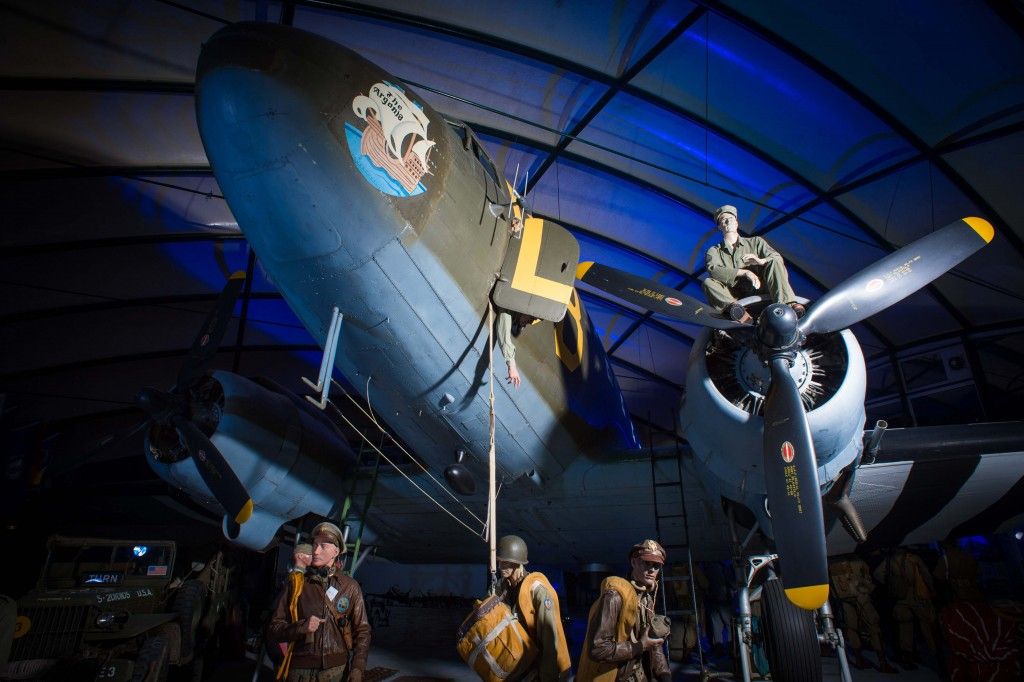
Interactive displays use modern tech to pull you into the paratrooper experience. Ever wondered what it felt like to jump into Normandy on D-Day? The simulations here get you pretty close—at least as close as most of us would dare.
Give yourself a couple of hours to take it all in. English translations are posted throughout, which helps a lot.
Nearby Museums in Bayeux and Caen
If you’re up for a short drive, Bayeux and Caen both have museums that are genuinely worth your time. The Bayeux War Museum covers the Battle of Normandy with tanks, artillery, and multimedia displays—it’s thorough without feeling overwhelming.
Caen’s Memorial Museum, opened in 1988, is often called one of the best World War II museums in Europe. It digs deeper than just military tactics, connecting the D-Day story to bigger ideas about peace and reconciliation. You get more than just dates and battles here.
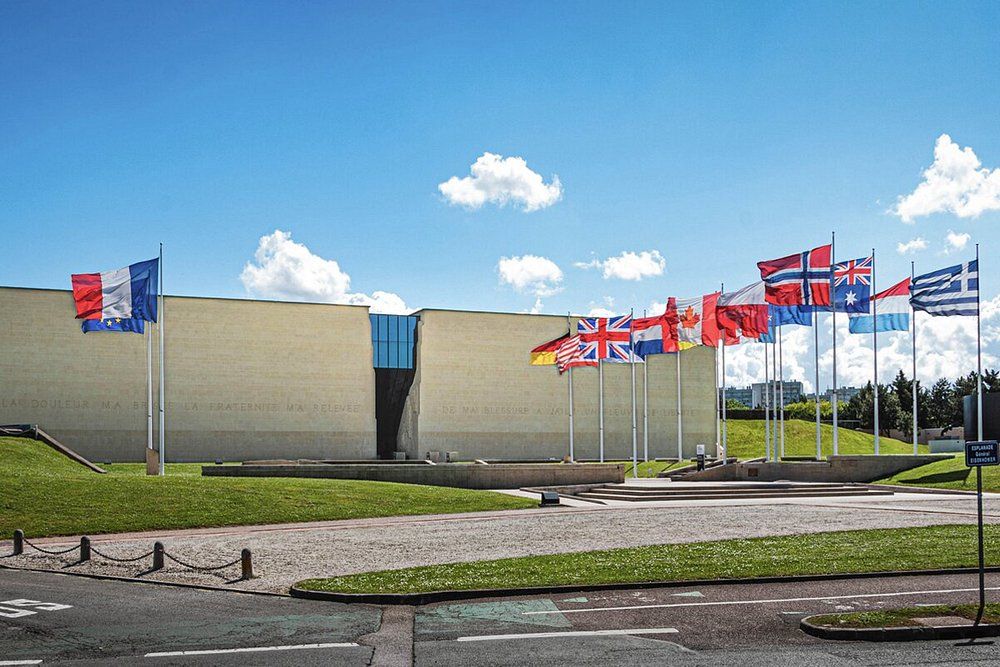
Both museums offer guided tours in English, which adds a lot of context. If you want the bigger picture of the Allied campaign, these stops are worth adding to your list.
If you’re planning to see more than one museum, a combination ticket can save you a bit and simplify things.
Guided Tours and Visitor Experiences
Sainte-Mère-Église gives you plenty of ways to dive into its D-Day past. You can join expert-led tours or catch reenactments that make June 1944 feel surprisingly close.
Guided D-Day Tours from Sainte-Mère-Église
Several local operators run tours from town to major D-Day sites nearby. These trips usually last between four and eight hours, covering the main landing beaches and key battle spots.
Full-day tours hit Utah Beach, Omaha Beach, and the American Cemetery. Local guides share stories about the paratroopers who landed in Sainte-Mère-Église. It feels personal, not just historical.
Take your pick between group and private tours. Group trips run about €70-90 per person, while private ones cost €120-200, depending on your group size.

Many guides grew up here or have deep family roots, so you get stories passed down from people who saw the invasion firsthand. You’ll also see the 15 information panels scattered around town, marking important D-Day sites.
Bus tours make it easy to hit several locations, especially if you don’t have a car while in town.
Recommended D-Day Tours from Bayeux:
- American D-Day Sites in Normandy Full-Day Tour
- American D-Day Sites in Normandy Half-Day Tour
- Half-Day Normandy WWII Sidecar Tour
- Full-Day US Battlefields of Normandy Tour
Paratrooper and Battle Reenactments
Sainte-Mère-Église hosts lively paratrooper reenactments throughout the year, but the biggest shows happen during D-Day anniversary week in early June.
On June 6th, things really come alive—volunteers in full 1944 paratrooper gear jump from vintage planes, and you can watch from special viewing spots around town. It’s hard not to get chills.
Local actors also stage battle scenes near the church square, recreating the liberation of the town. These performances usually happen right where John Steele landed.
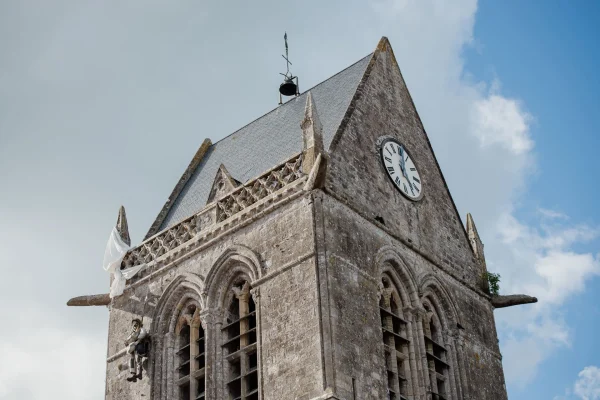
In the summer (June through August), smaller reenactments pop up on Saturday afternoons. They’re free and make for some fantastic photos.
If you want the whole immersive experience, visit during the anniversary week. The town fills up with period vehicles, military camps, and ceremonies honoring veterans—it’s like stepping into a different era.
See all available accommodations near Sainte-Mère-Église.
Sainte-Mère-Église Today: Practical Visitor Information
Sainte-Mère-Église draws visitors all year, thanks to its well-organized tourism centered around D-Day history. The town manages to mix its solemn past with enough modern comforts to make both day trips and longer stays easy.
Find comfortable stays within moments of historic battlegrounds
Planning Your Visit
April to October is the sweet spot for visiting—the weather’s pleasant, and everything’s open. June gets packed because of the D-Day events, so if that’s when you’re coming, book your place early.
The Airborne Museum keeps these hours:
- April–September: 9:00 AM to 7:00 PM
- October–March: 10:00 AM to 6:00 PM
- Closed in January for maintenance
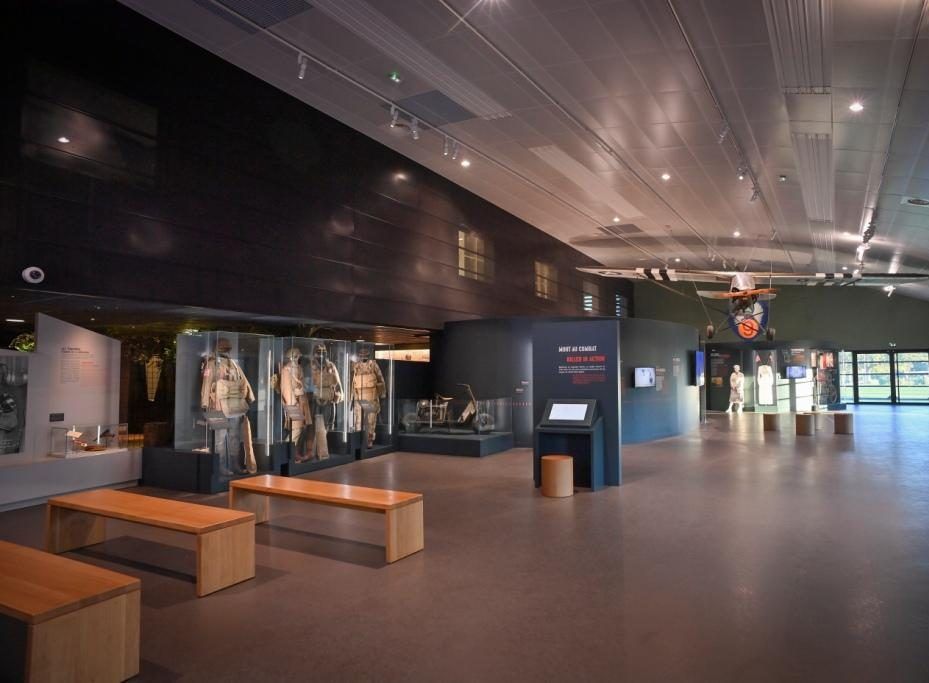
Admission (2025):
- Adults: €9.50
- Children (6-16): €5.50
- Family pass: €25.00
Set aside 2–3 hours for the museum, then give yourself another hour to wander the church and main square. The Tourist Office (right on the main square) hands out maps and info about local walking tours.
Lots of people pair Sainte-Mère-Église with Utah Beach, which is just a 15-minute drive—makes for a solid full-day D-Day outing.
See all available accommodations near Sainte-Mère-Église.
Local Amenities and Accommodations
Most of the town’s restaurants cluster around the main square. You’ll find Norman classics—cider, Calvados, good cheese—on just about every menu.
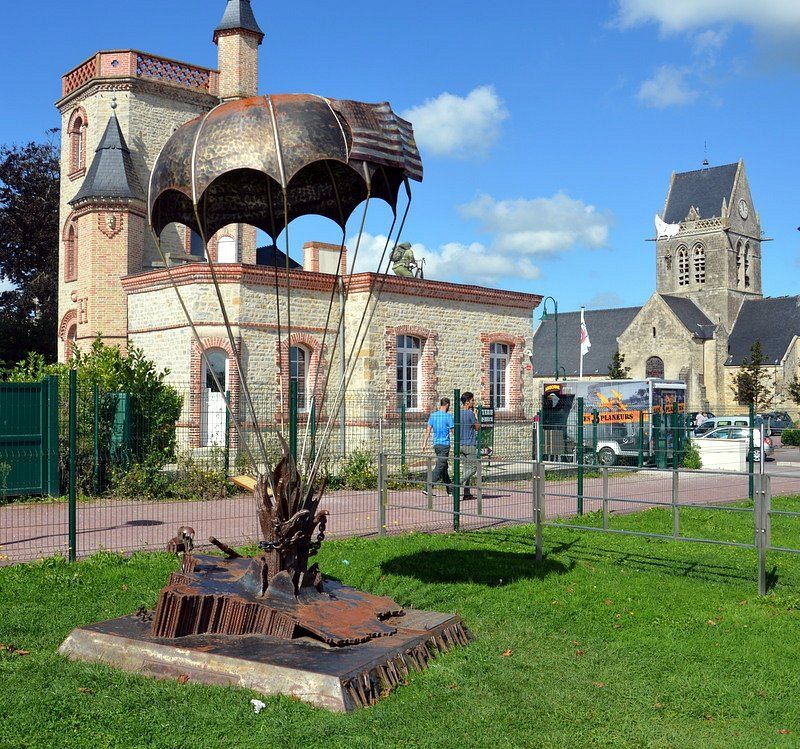
Favorites among visitors:
- Café de la Paix – old-school vibe, nice terrace
- Restaurant John Steele – named for the famous paratrooper
- Le Roosevelt – classic French dishes, relaxed setting
Accommodation runs from simple to mid-range.
See all available accommodations near Sainte-Mère-Église.
There’s a small grocery store, pharmacy, and ATM in town. Most places take cards, but it’s smart to have a bit of cash for small buys or market stalls.
Transportation and Access from Paris
Getting here from Paris isn’t too tricky, but you’ll want to plan a bit:
By Train: Hop on the high-speed train from Paris Saint-Lazare to Carentan (about 3 hours), then grab a taxi—it’s a 15-minute ride to Sainte-Mère-Église.
By Car: Driving from Paris takes roughly 3.5 hours on the A13. There are a few parking lots in town—usually free, though they fill up quickly during busy times.
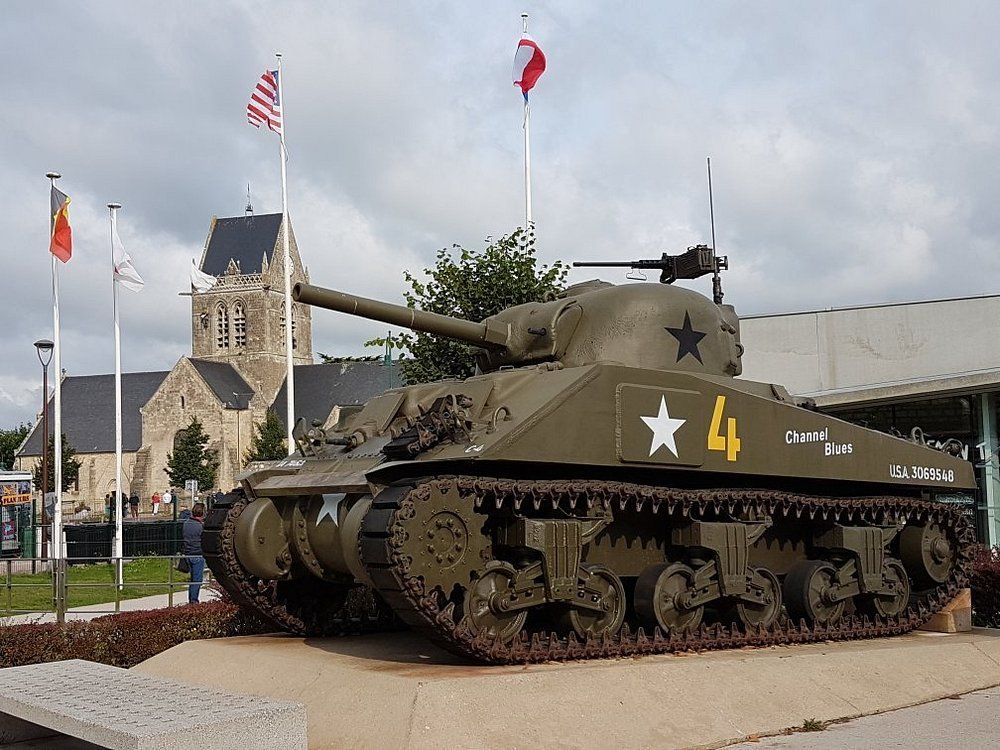
Guided Tours: Plenty of companies run day trips from Paris that include Sainte-Mère-Église and the main D-Day sites. Expect to pay €150-200 per person, which covers transport and a guide.
Honestly, having a car gives you the most freedom. Public transport in rural Normandy is pretty limited, so getting between sites without your own wheels can get frustrating.
Nearby Destinations and Additional Highlights
While you’re in Sainte-Mère-Église, it’s tempting to branch out and see more of Normandy’s historic sites. The region is packed with places that add depth to the D-Day story—it’s hard to fit them all in one trip.
Pegasus Bridge and Other Normandy Sites
Pegasus Bridge sits about 45 miles east, famous for its capture by British airborne troops before dawn on D-Day. That operation was a game-changer. The Pegasus Memorial Museum lets you see the original bridge and learn about Operation Deadstick—it’s surprisingly moving.
The Normandy coast has five main landing beaches, each with its own vibe and memorials:
- Utah Beach – closest to Sainte-Mère-Église
- Omaha Beach – home to the American Cemetery
- Gold Beach
- Juno Beach
- Sword Beach
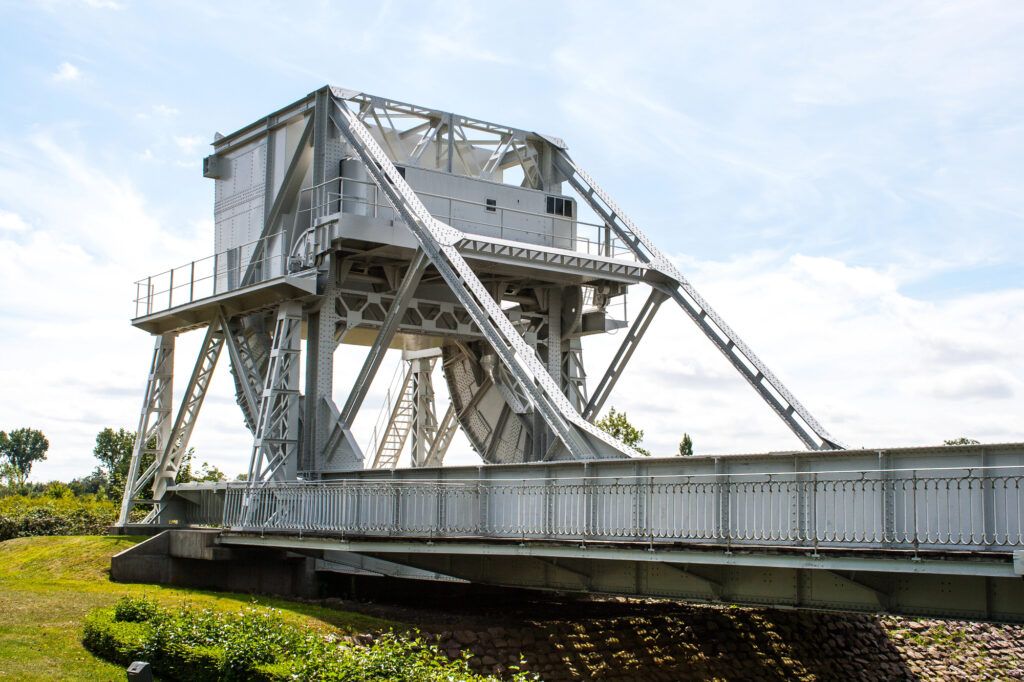
Pointe du Hoc, where Army Rangers scaled sheer cliffs under fire, is just a half-hour away. The craters and bunkers haven’t changed much since 1944—standing there, you can’t help but imagine what it was like.
Visiting Bayeux, Caen, and Surroundings
Bayeux sits just 40 minutes from Sainte-Mère-Église and makes a fantastic base for D-Day exploration. This charming medieval town is home to the famous Bayeux Tapestry and claims the honor of being the first major town liberated after D-Day. You’ll stumble across plenty of good restaurants and cozy places to stay—honestly, it’s hard not to linger.
Head a bit farther east and you’ll reach Caen, where you’ll find the striking Caen Memorial Museum. Opened on D-Day in 1988, it’s often called France’s top World War II museum. The exhibits don’t just stop at D-Day—they dive into the war’s origins and even touch on the Cold War. It’s a lot to take in, but somehow it works.
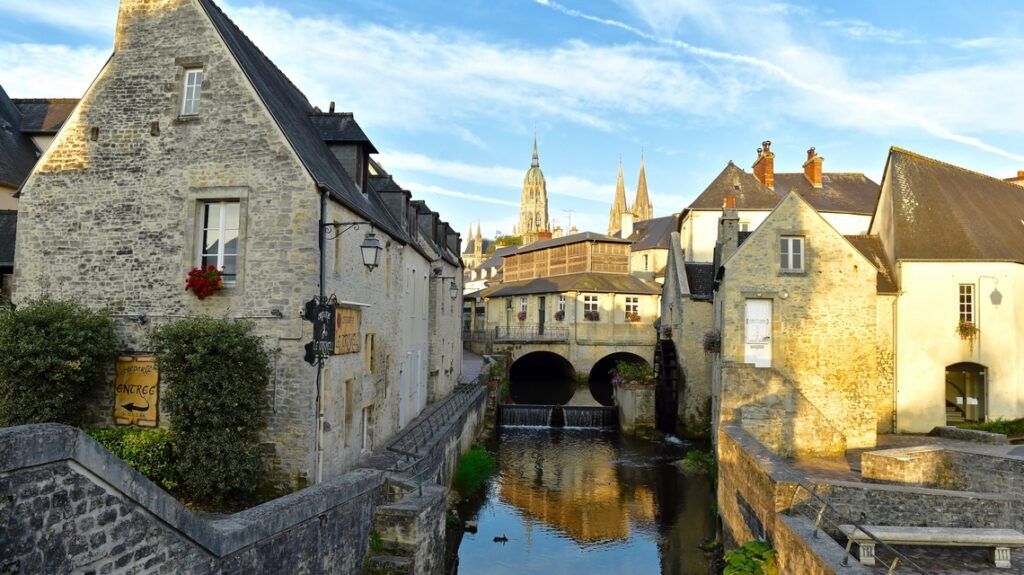
Between site visits, the Normandy countryside sneaks up on you with its apple orchards and dairy farms. If you’re up for it, try some of the local specialties:
- Calvados (apple brandy)
- Camembert cheese
- Fresh seafood
- Tarte Normande (apple tart)
You can get to most sites by car, but honestly, guided tours from Caen and Bayeux make life easier and fill in the history along the way.
See all available accommodations near Sainte-Mère-Église.

